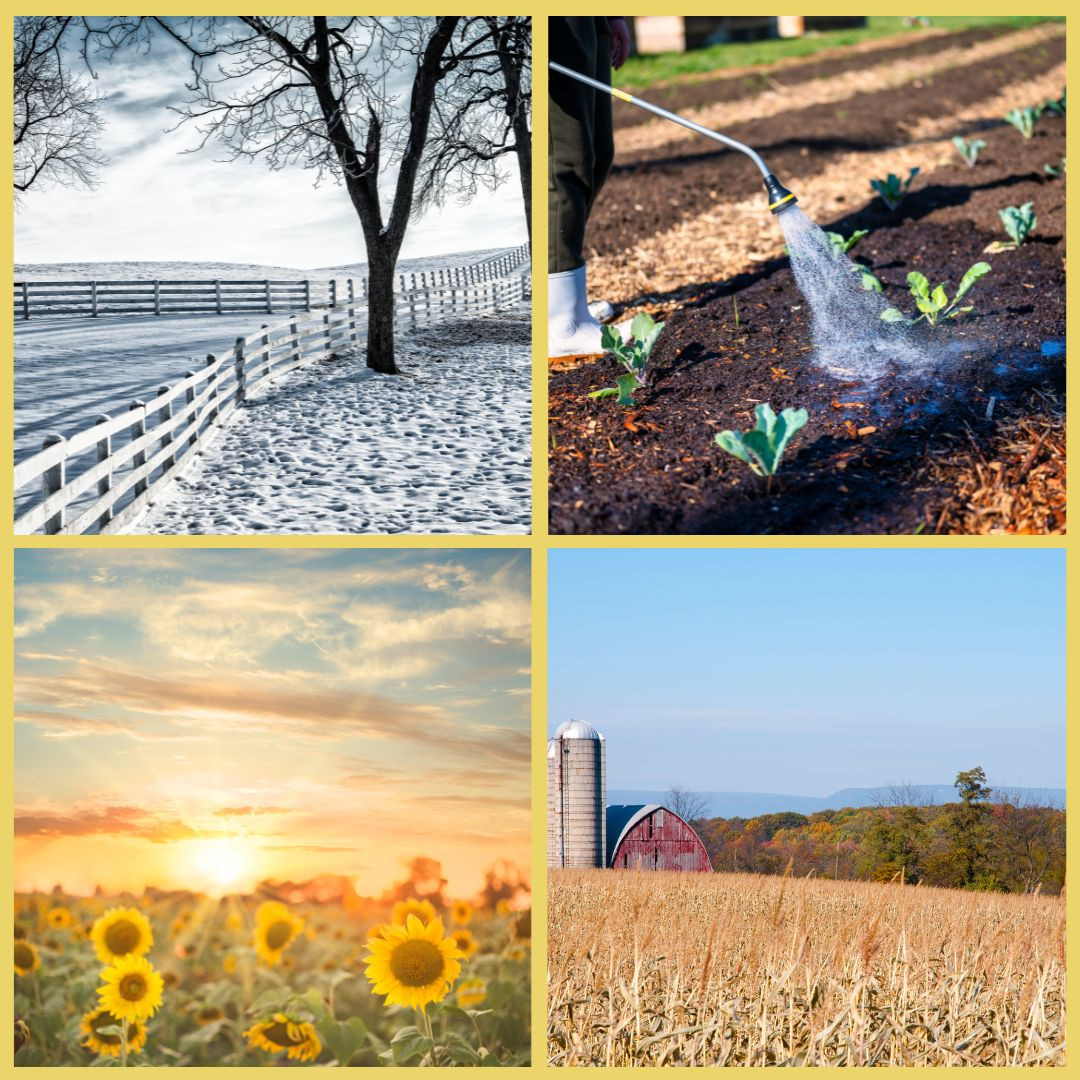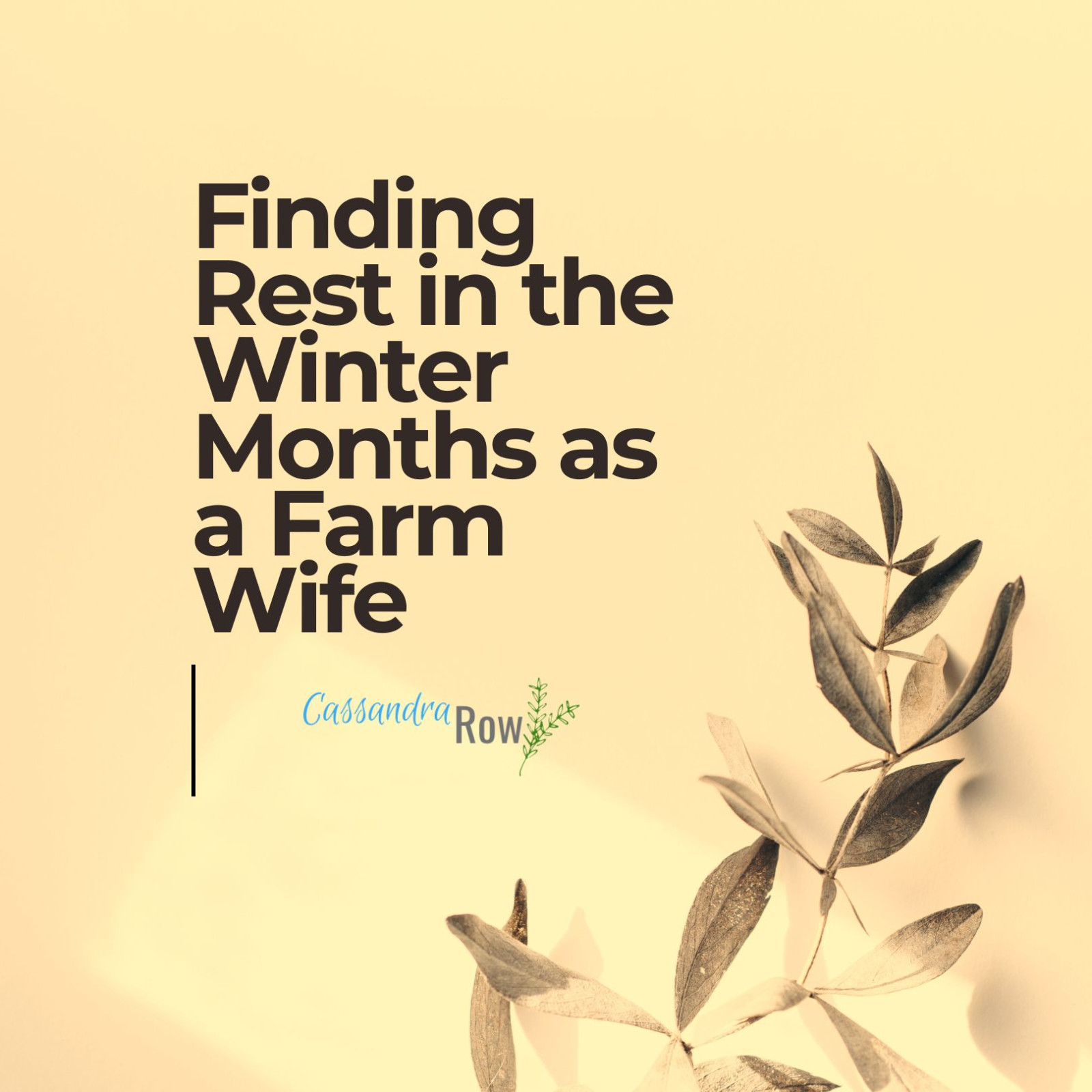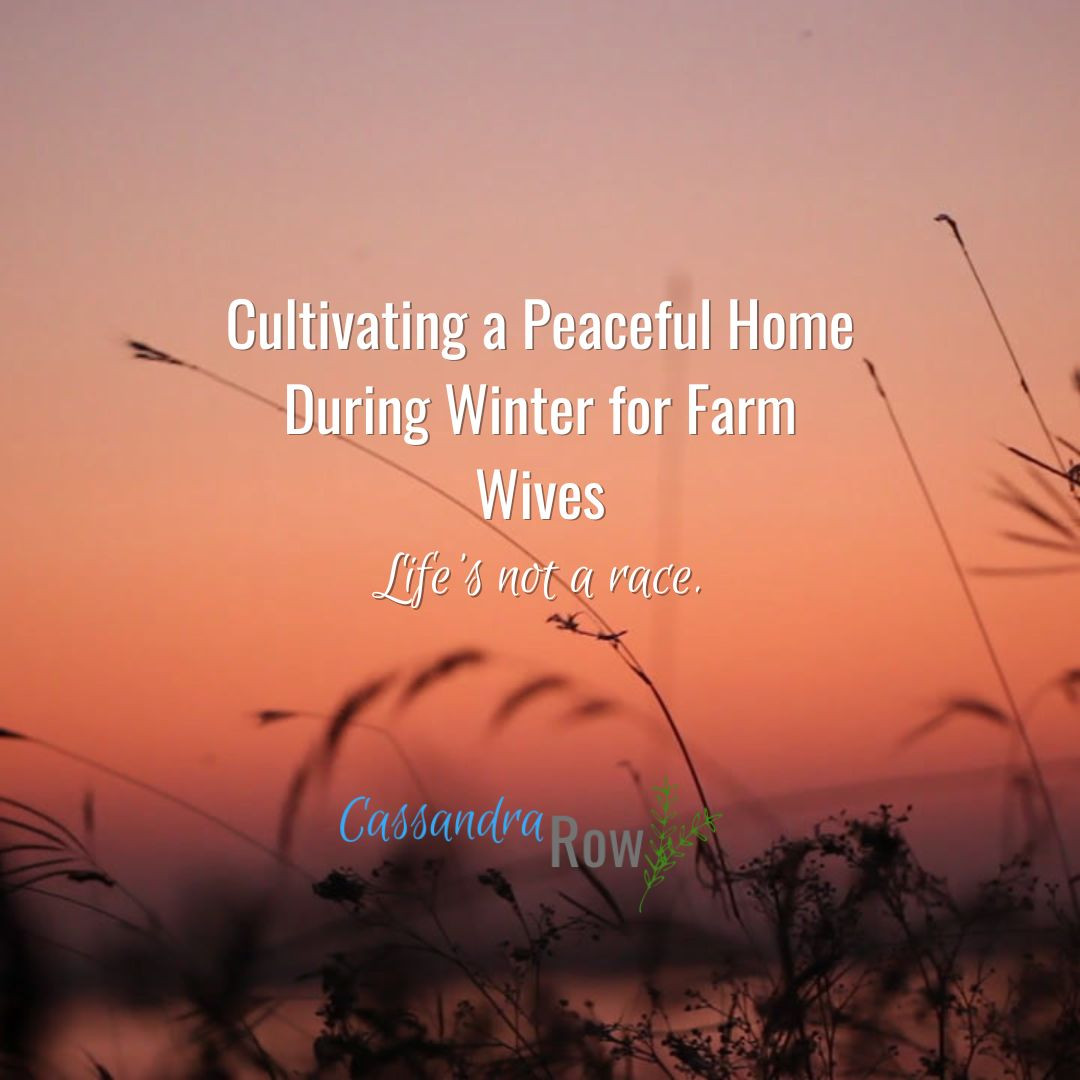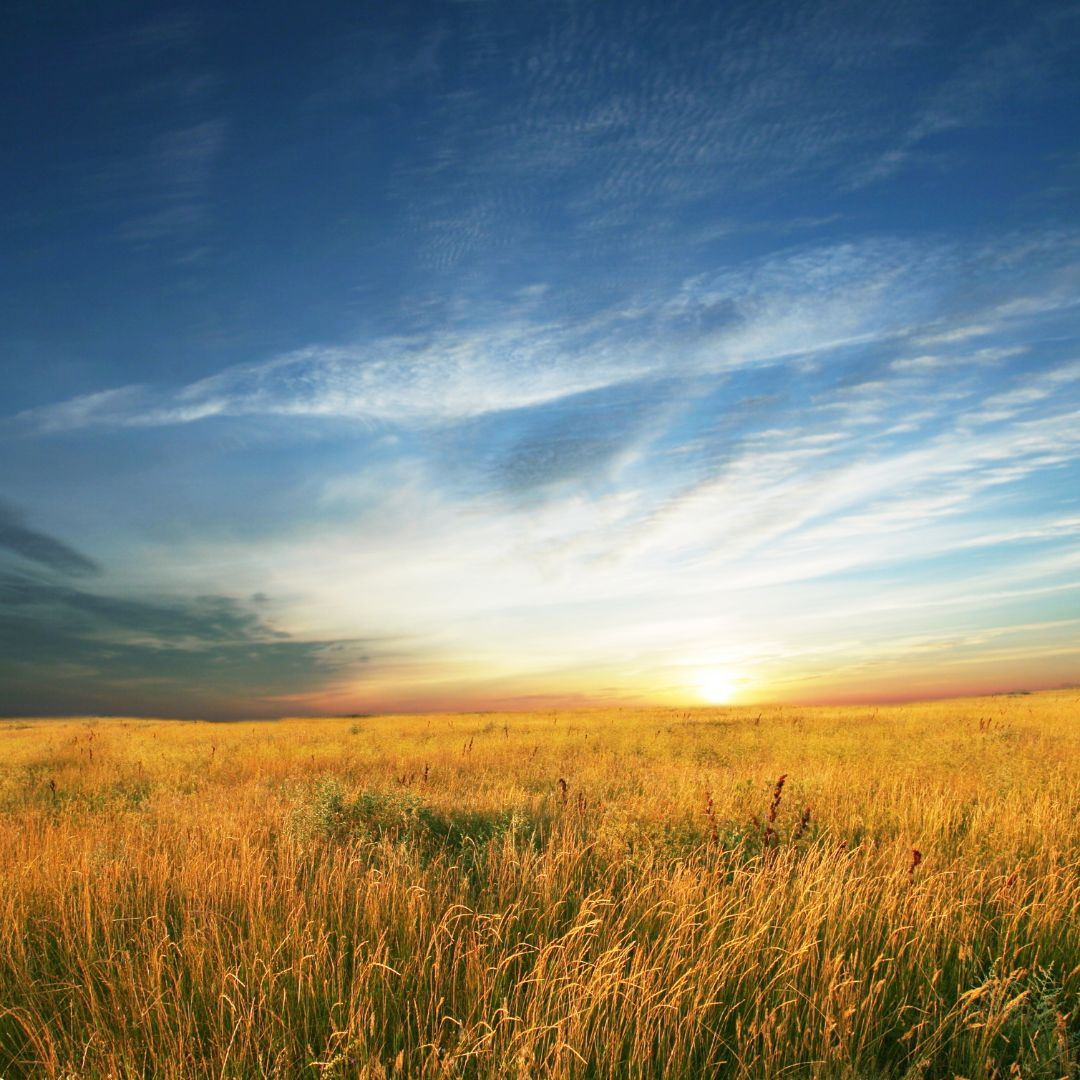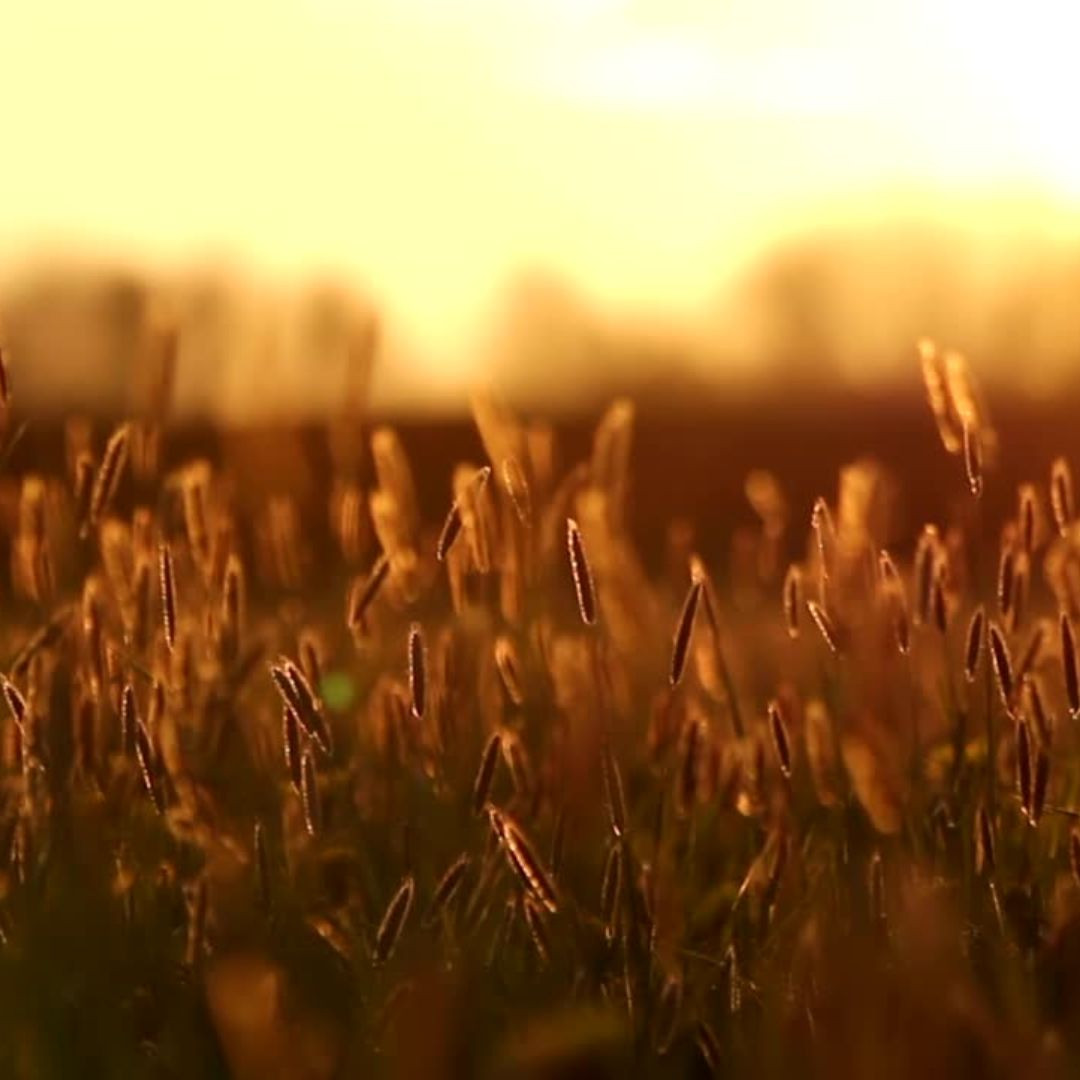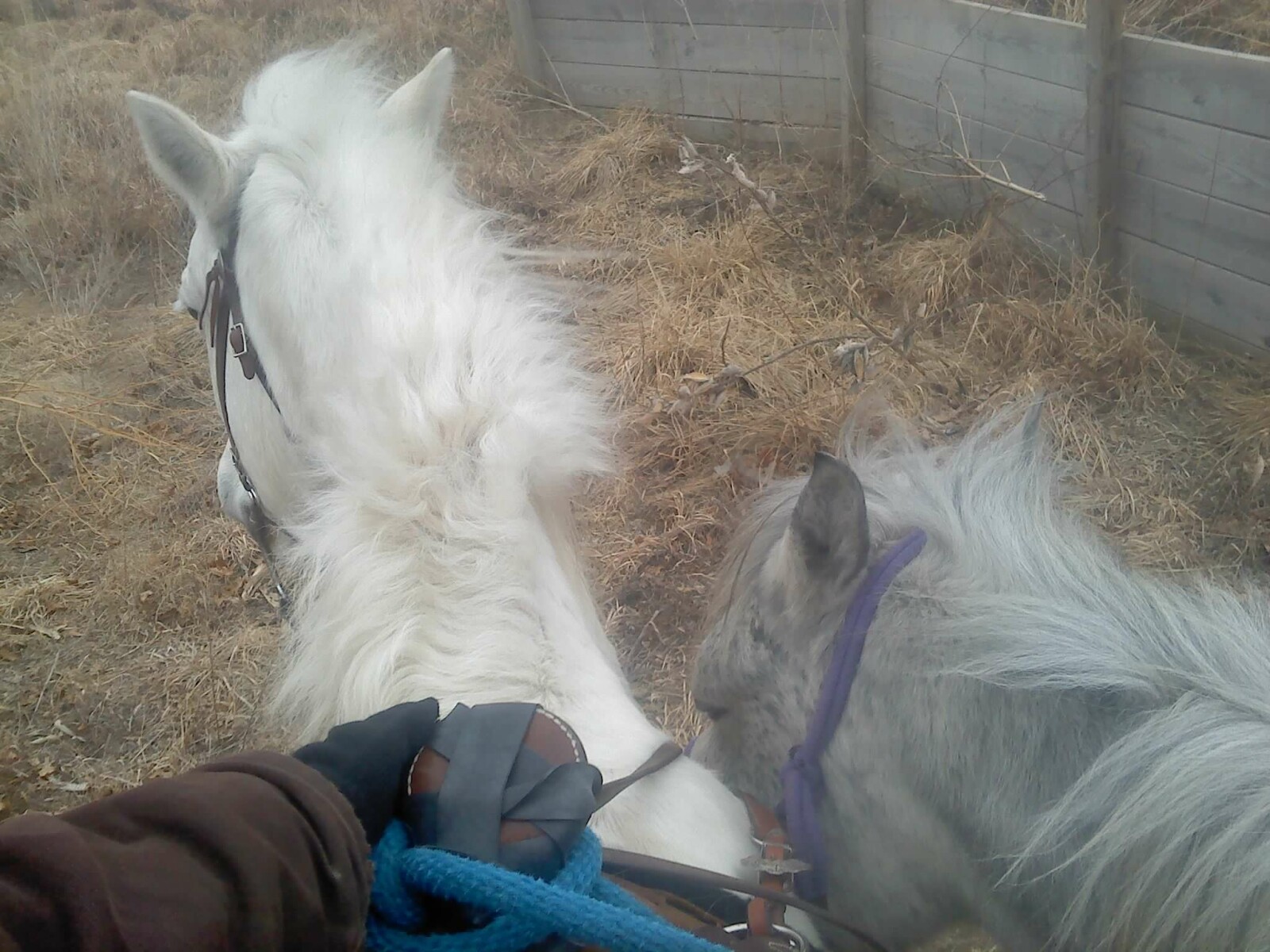
This post may contain affiliate links, which means that I may receive a commission if you make a purchase using these links, with NO additional cost to you.
Horses are one of the most rewarding animals to have. They are intelligent and loyal, and they can provide a lifetime of companionship. But with this reward comes responsibility. As their owner, you must be knowledgeable about how to keep your horse healthy and happy. Let’s take a look at some important considerations when caring for your horse.
Hay is Essential
Horses need access to hay for 75% of the day—this is essential for their health and well-being. Slower feeders can be used to eliminate wasted hay while keeping your horse chewing for longer periods of time. Prairie hay is usually sufficient for horses that aren’t in hard work, but some may need alfalfa to maintain weight.
Grain Consumption Depends on Workload
Depending on the workload of your horse, you may or may not need to supplement with grain. If you do decide that grain is necessary, there are many different types available depending on the needs of your horse—oats are an example of a simple feed that many horses do well on. There are also a host of commercial feed mixes for horses in different age and workloads. It’s important to note that overfeeding grain can be dangerous, so it’s best to consult with a veterinarian before making any decisions regarding grain consumption. To keep things simple for my herd, aged 13-23, I feed different levels of oats, with a mineral top dressed.
Provide Accessible Water Source
It’s no surprise that horses need water! On average, a horse will drink 5-10 gallons per day depending on weather and workload—so make sure they have easy access to plenty of water either from an automatic waterer or stock tank.
Additional Care
Horses also need regular foot trimmings. Like our fingernails, horses’ hooves grown continually. Unless they are running around on rock the hoof growth will outpace the wear down. You will need to locate a fairer to come and trim their hooves every 6-8 weeks. Horses will need their teeth floated occasionally. This is when a vet comes and files the sharp points of the teeth down so they can chew more effectively. Some horse need floated once a year, some every 5, it really depends on the horse.
Caring for your horse requires knowledge and dedication but it can also be incredibly rewarding! Make sure you provide hay throughout the day, determine if supplemental grain is necessary based on their workload, always make sure they have access to plenty of fresh drinking water each day, and their feet and teeth are cared for! With these simple steps in mind, you can ensure your horse stays healthy and happy in their forever home!
As I've grown in my journey as an entrepreneur, mom, gardener, and livestock owner, I struggled to find a planner that met my needs and kept me organized. So I MADE MY OWN. You can take a look at it on the link blow and buy it on amazon below
Don't want the whole calendar part? I got you! I pulled the gardening and animal care pages out and put them in a book all their own.
Wanting a community to lean into? Join the FREE Helping Your Family Homestead for Food group! This community is for the Mommas, looking to stay home and raise their kids, but unsure how to keep everyone fed and make ends meet. I share tips from my journey from the office, to half the income and feeding my family from home, while maintaining good nourishing food. Tips include: gardening, bulk buying, caning,/preserving, livestock, homesteading, and home remedies. Your family is precious and this group is to help you gain the knowledge and tools to keep your family well and not reliant on outside professionals. Remedies and tips are easy and simple for the busy momma, time is precious after all, including pregnancy, birth, young kids, and illness. Trust your Momma gut again! This community offers the resources + community you need to help get started on your journey and prepare for whatever future you envision.
Starting to garden doesn't have to be hard! I gathered all the tips I've learned over my gardening learning curve and made them into a simple course to jump start your gardening your life.
I've had 3 very different pregnancies. After the first traumatic birth, I learned better and how to care for my body naturally and prevent common pregnancy and birth problems before they arise. This quick course will get you the tools you need to have a naturally healthy pregnancy, labor, and delivery. My first pregnancy I had a normal western medicine all the things pregnancy. My second? I flipped to completely natural, no medicine. Bonus: Preventing Preeclampsia Without the Aspirin & Healing from Birth Trauma
Supporting Your Family Naturally From the Inside Out community!! This community is for the Mommas, looking to Support Your Family from Nature for Wellness. Tips range from nutrition, herbals, detoxing, natural cleaning, and essential oils. Basically all the things I’ve learned slowly over the past 5+ years if my journey. We have moved off Facebook, so to better serve our community and be able to discuss openly option for providing for your family in the best way possible.
Join the Community
Join the Community
Click here to get the stories straight to your email:
For more on wellness tips click here:
For more on homesteading on your budget click here:
For more simple DIY updates click here:
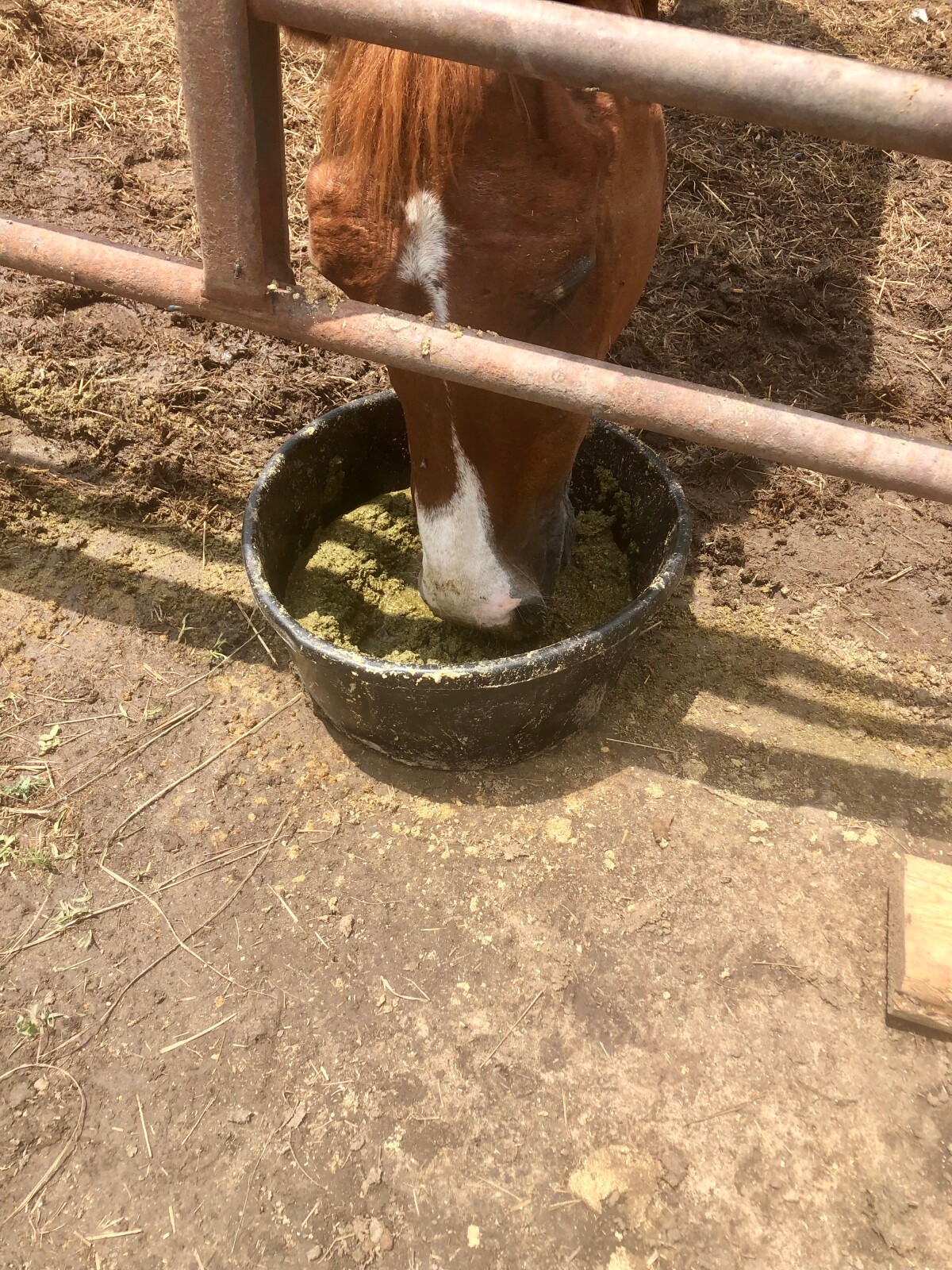
This post may contain affiliate links, which means that I may receive a commission if you make a purchase using these links, with NO additional cost to you.
Horses are amazing animals, and become even more special as they age. They can be a great source of joy and companionship, but there is an important responsibility that comes with owning an older horse—special care. As horses get into their 20s, they can start to lose their teeth, making it difficult for them to chew hay. Fortunately, there are plenty of ways to ensure your beloved steed stays healthy and happy in its golden years. Let’s take a look at how you can best care for your senior horse.
Food Options for Senior Horses
The most important thing you can do for your senior horse is make sure they’re getting the proper nutrition. This means you may have to switch up their diet from what they were used to when they were younger. For example, if your senior horse is no longer able to properly chew long stem hay, try switching them over to dehydrated alfalfa cubes or bales that are easier for them to digest. There are also specially formulated feeds designed specifically for senior horses who cannot chew anymore; these feeds usually come in the form of pellets and provide all the nutrients they need while being easy on their teeth.
Although aged horses may not be able to pull all the nutrients from hay like they used to, it’s still important that they have access to some hay so that they can keep their teeth clean and exercised—plus many aging horses still enjoy the taste! You could also consider adding supplements such as vitamins or minerals into your senior horse’s diet in order to make sure all their nutritional needs are met.
Exercise & Care Tips
In addition to providing your aging horse with proper nutrition, you should also keep up with regular exercise and grooming routines in order maintain their overall health and well-being. Exercise helps keep joints flexible and muscles toned; make sure not to push your senior horse too hard as their muscles don’t repair themselves as quickly as those of a younger horse would. Grooming helps with circulation, keeps skin healthy, and gives you an opportunity bond with your equine companion—it’s a win-win!
Overall, caring for a senior horse requires patience and understanding; after all these years of companionship, it's important to ensure that your trusty steed remains comfortable in its golden years. With the right food options tailored towards seniors along with regular exercise and grooming routines, you will be able to provide your beloved companion with everything it needs so that it can continue living life happily on the homestead!
As I've grown in my journey as an entrepreneur, mom, gardener, and livestock owner, I struggled to find a planner that met my needs and kept me organized. So I MADE MY OWN. You can take a look at it on the link blow and buy it on amazon below
Don't want the whole calendar part? I got you! I pulled the gardening and animal care pages out and put them in a book all their own.
Wanting a community to lean into? Join the FREE Helping Your Family Homestead for Food group! This community is for the Mommas, looking to stay home and raise their kids, but unsure how to keep everyone fed and make ends meet. I share tips from my journey from the office, to half the income and feeding my family from home, while maintaining good nourishing food. Tips include: gardening, bulk buying, caning,/preserving, livestock, homesteading, and home remedies. Your family is precious and this group is to help you gain the knowledge and tools to keep your family well and not reliant on outside professionals. Remedies and tips are easy and simple for the busy momma, time is precious after all, including pregnancy, birth, young kids, and illness. Trust your Momma gut again! This community offers the resources + community you need to help get started on your journey and prepare for whatever future you envision.
Starting to garden doesn't have to be hard! I gathered all the tips I've learned over my gardening learning curve and made them into a simple course to jump start your gardening your life.
I've had 3 very different pregnancies. After the first traumatic birth, I learned better and how to care for my body naturally and prevent common pregnancy and birth problems before they arise. This quick course will get you the tools you need to have a naturally healthy pregnancy, labor, and delivery. My first pregnancy I had a normal western medicine all the things pregnancy. My second? I flipped to completely natural, no medicine. Bonus: Preventing Preeclampsia Without the Aspirin & Healing from Birth Trauma
Supporting Your Family Naturally From the Inside Out community!! This community is for the Mommas, looking to Support Your Family from Nature for Wellness. Tips range from nutrition, herbals, detoxing, natural cleaning, and essential oils. Basically all the things I’ve learned slowly over the past 5+ years if my journey. We have moved off Facebook, so to better serve our community and be able to discuss openly option for providing for your family in the best way possible.
Join the Community
Join the Community
Click here to get the stories straight to your email:
For more on wellness tips click here:
For more on homesteading on your budget click here:
For more simple DIY updates click here:
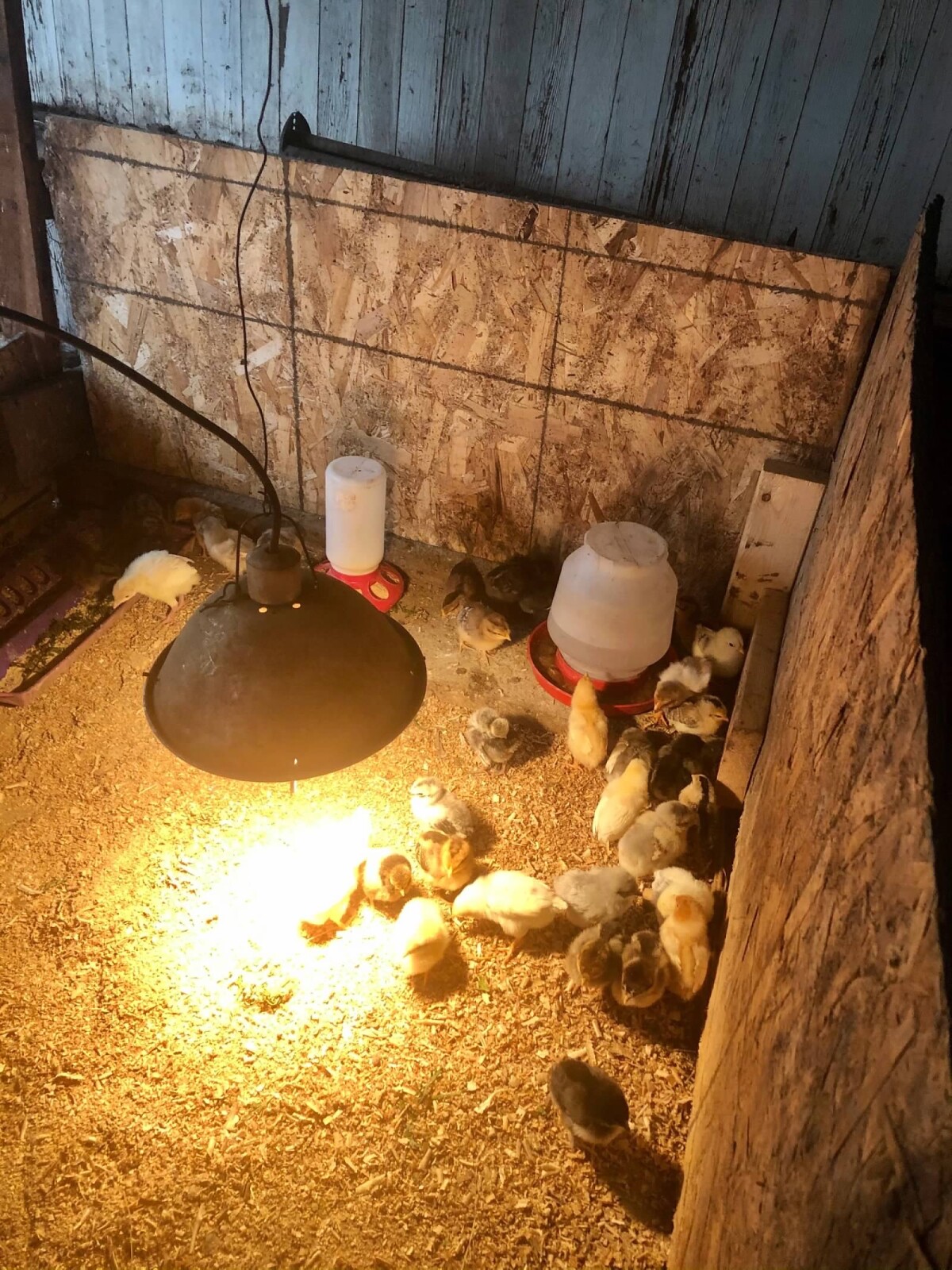
This post may contain affiliate links, which means that I may receive a commission if you make a purchase using these links, with NO additional cost to you.
Starting baby poultry is a great way to kick off your homesteading journey. It can be a bit more labor intensive than other animals, but it doesn’t have to be difficult if you know what tools and supplies you’ll need ahead of time. Here’s a quick breakdown of the basics for raising healthy chicks, guinea, duck, goose, and turkey.
Heat Requirements
Baby poultry need heat to thrive—specifically 90 to 95 degrees Fahrenheit. To help maintain this temperature in their brooding area, you will need heat lamps with red light bulbs (which helps prevent pecking) and a small space called a brooder box. This can be an old stock tank, or boarded area. Throughout the day, check the temperature by observing how the chicks are behaving. If they’re all huddled together under the lamp, they’re cold; if they’re spread out around the room or away from the heat lamp entirely, they’re too warm. At an ideal temperature, some chicks should be under the lamp while others explore and eat/drink on their own. After about a week they can move to a bigger area, mine is shown in the picture.
Watering
In addition to heat requirements, your chicks will also need plenty of water throughout the day—especially when they first arrive. To keep them safe while drinking, elevate their water dish slightly and add small rocks in the bottom so that they don’t accidentally drown themselves while drinking.
Feeding Requirements
Choosing food for your baby poultry can seem tricky at first but it doesn't have to be difficult! The easiest route is to buy chick starter food specially formulated for baby poultry. This type of feed contains all the essential nutrients that your birds need to grow healthy and strong (and no antibiotics are needed). Be sure to monitor your birds closely for signs of malnutrition or poor health—if you notice any problems with their condition after making changes to their diet or environment contact your vet immediately! After about 2-3 weeks, I start to transition the babies to my home mixed feed.
For bedding, the first day or two simply used newspaper, then add shavings once all the chicks have figured out where the food is. Otherwise, babies will peck at the shavings instead of the food, and starve out.
Upon arrival
You will take the chicks out of the box, dip their beak in the water and then the feed, before setting them down. They will all crowd together until you leave, so when checking on them later, you will need to be quiet to see the chicks actual behavior. In general, hold the chicks as little as possible the first 48 hours, to reduce their stress.
Raising baby poultry can seem intimidating at first but it doesn't have to be hard! With just a few basic supplies like heat lamps and chick starter feed, you'll be well on your way towards having healthy birds that are ready for life on your homestead. Keep an eye on them regularly and make sure they're getting enough food and water throughout each day—with proper care you'll soon have a flock of happy birds! Best of luck!
As I've grown in my journey as an entrepreneur, mom, gardener, and livestock owner, I struggled to find a planner that met my needs and kept me organized. So I MADE MY OWN. You can take a look at it on the link blow and buy it on amazon below
Don't want the whole calendar part? I got you! I pulled the gardening and animal care pages out and put them in a book all their own.
Wanting a community to lean into? Join the FREE Helping Your Family Homestead for Food group! This community is for the Mommas, looking to stay home and raise their kids, but unsure how to keep everyone fed and make ends meet. I share tips from my journey from the office, to half the income and feeding my family from home, while maintaining good nourishing food. Tips include: gardening, bulk buying, caning,/preserving, livestock, homesteading, and home remedies. Your family is precious and this group is to help you gain the knowledge and tools to keep your family well and not reliant on outside professionals. Remedies and tips are easy and simple for the busy momma, time is precious after all, including pregnancy, birth, young kids, and illness. Trust your Momma gut again! This community offers the resources + community you need to help get started on your journey and prepare for whatever future you envision.
Starting to garden doesn't have to be hard! I gathered all the tips I've learned over my gardening learning curve and made them into a simple course to jump start your gardening your life.
I've had 3 very different pregnancies. After the first traumatic birth, I learned better and how to care for my body naturally and prevent common pregnancy and birth problems before they arise. This quick course will get you the tools you need to have a naturally healthy pregnancy, labor, and delivery. My first pregnancy I had a normal western medicine all the things pregnancy. My second? I flipped to completely natural, no medicine. Bonus: Preventing Preeclampsia Without the Aspirin & Healing from Birth Trauma
Supporting Your Family Naturally From the Inside Out community!! This community is for the Mommas, looking to Support Your Family from Nature for Wellness. Tips range from nutrition, herbals, detoxing, natural cleaning, and essential oils. Basically all the things I’ve learned slowly over the past 5+ years if my journey. We have moved off Facebook, so to better serve our community and be able to discuss openly option for providing for your family in the best way possible.
Join the Community
Join the Community
Click here to get the stories straight to your email:
For more on wellness tips click here:
For more on homesteading on your budget click here:
For more simple DIY updates click here:
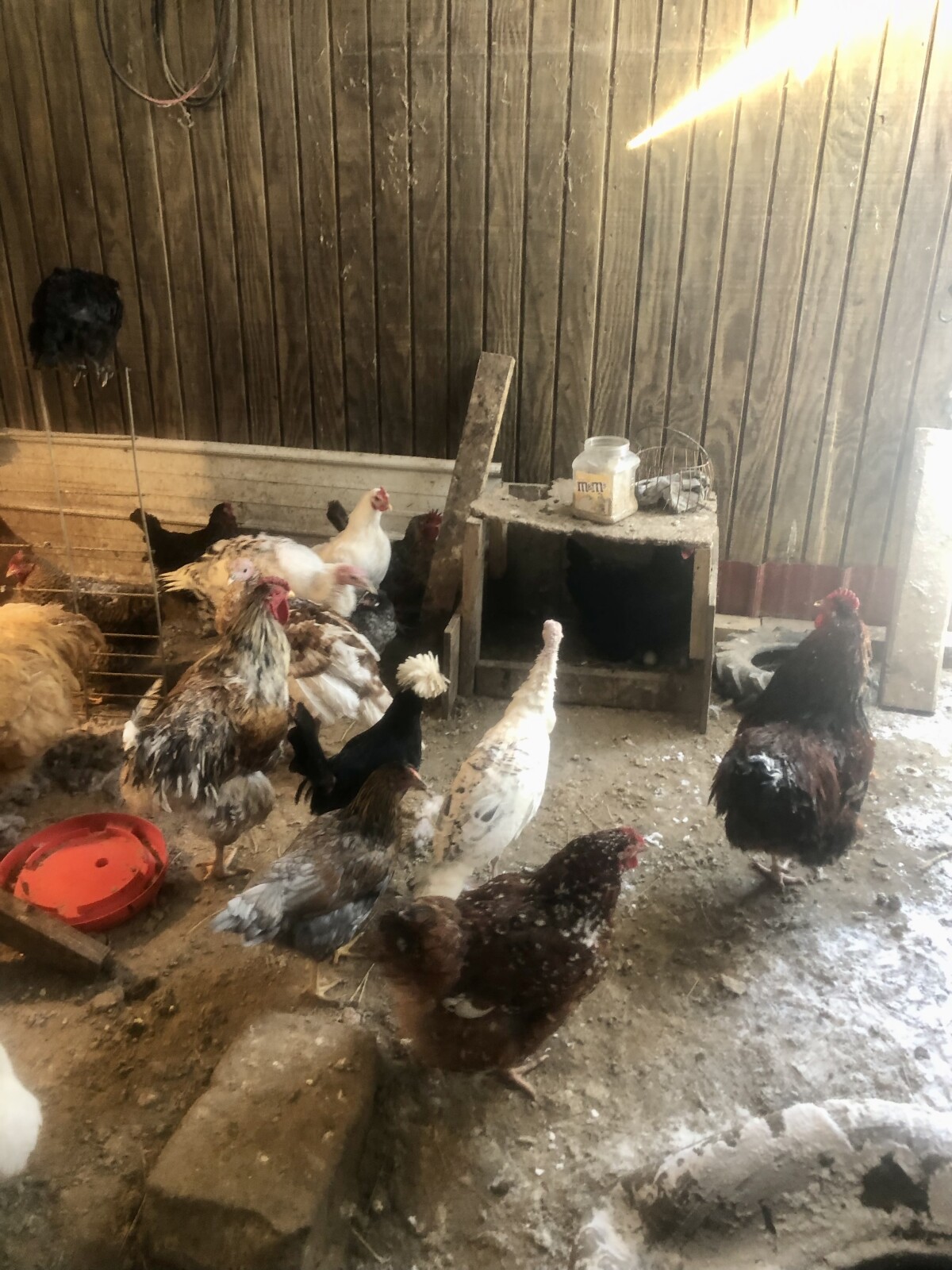
This post may contain affiliate links, which means that I may receive a commission if you make a purchase using these links, with NO additional cost to you.
Chickens are one of the easiest animals to raise, even if you have limited space. Whether you’re living on a city lot or a large farm, chickens can be a great addition to your homestead. Learning how to start is easy and doesn’t require much investment. Let’s look at the basics of raising chickens in your backyard.
Coop Requirements: Chickens need some type of draft free shelter, often called a coop. If you’re just getting started, this could be as simple as an old lean-too shed or barn. You can also build something more elaborate like a chicken palace! No matter what design you choose, make sure it has enough ventilation and enough room for your flock to move around comfortably without overcrowding. If they are completely confined you need 4 square feet of coop space per bird. If you are free ranging, you can shrink this a little, but not a lot.
The coop should also include roosts, this could be as simple as attaching 2x4 boards across the corner of the coop, or using an old ladder found in an old barn. Make sure you have 10 inches of roost space per bird. Nesting boxes are also needed for chickens. Again, this can be as simple as, an old tire or barrel hung up or on the ground. If you want to build one, a 12x12x12 inch box is preferred. You will need 1 box for every 4 laying hens.
Feed & Water Requirements: Another important component when raising chickens is providing them with fresh water and feed. For water, they need either a tray of water or traditional chicken waterers that are available online or through local feed stores. When it comes to food, chickens are quite forgiving so you can keep it simple with store bought feed or mix together your own ingredients from scratch depending on your flock’s needs! I use a mix of corn, distillers, sunflowers, and oats. They also love kitchen scraps of all kinds so supplementing their diet with leftovers from meals is always appreciated! I’ll give more on feed in a later blog.
The final thing to consider when caring for chickens is predator control. To keep predators away from your chickens, build secure fencing around their coop and run area — this will help keep them safe from potential predators such as raccoons or coyotes that may lurk nearby. If you are wanting to free range, you can, but chickens are easy targets for predators. Having a goose or a good rooster to run with your will help alarm the rest of the flock when danger is near in the sky. If you are on a large space, having a livestock guardian dog deters the larger predators like foxes and coyotes.
Raising chickens in your backyard is an easy way to provide fresh eggs for yourself while also having fun taking care of them. All they need is a comfortable home (coop), roosts, nesting boxes, food and water – all items which you can easily find around your house or purchase inexpensively at any farm store. So why not give it a try? With just the basics listed above, you'll be on your way towards becoming a happy homesteader!
As I've grown in my journey as an entrepreneur, mom, gardener, and livestock owner, I struggled to find a planner that met my needs and kept me organized. So I MADE MY OWN. You can take a look at it on the link blow and buy it on amazon below
Don't want the whole calendar part? I got you! I pulled the gardening and animal care pages out and put them in a book all their own.
Wanting a community to lean into? Join the FREE Helping Your Family Homestead for Food group! This community is for the Mommas, looking to stay home and raise their kids, but unsure how to keep everyone fed and make ends meet. I share tips from my journey from the office, to half the income and feeding my family from home, while maintaining good nourishing food. Tips include: gardening, bulk buying, caning,/preserving, livestock, homesteading, and home remedies. Your family is precious and this group is to help you gain the knowledge and tools to keep your family well and not reliant on outside professionals. Remedies and tips are easy and simple for the busy momma, time is precious after all, including pregnancy, birth, young kids, and illness. Trust your Momma gut again! This community offers the resources + community you need to help get started on your journey and prepare for whatever future you envision.
Starting to garden doesn't have to be hard! I gathered all the tips I've learned over my gardening learning curve and made them into a simple course to jump start your gardening your life.
I've had 3 very different pregnancies. After the first traumatic birth, I learned better and how to care for my body naturally and prevent common pregnancy and birth problems before they arise. This quick course will get you the tools you need to have a naturally healthy pregnancy, labor, and delivery. My first pregnancy I had a normal western medicine all the things pregnancy. My second? I flipped to completely natural, no medicine. Bonus: Preventing Preeclampsia Without the Aspirin & Healing from Birth Trauma
Supporting Your Family Naturally From the Inside Out community!! This community is for the Mommas, looking to Support Your Family from Nature for Wellness. Tips range from nutrition, herbals, detoxing, natural cleaning, and essential oils. Basically all the things I’ve learned slowly over the past 5+ years if my journey. We have moved off Facebook, so to better serve our community and be able to discuss openly option for providing for your family in the best way possible.
Join the Community
Join the Community
Click here to get the stories straight to your email:
For more on wellness tips click here:
For more on homesteading on your budget click here:
For more simple DIY updates click here:
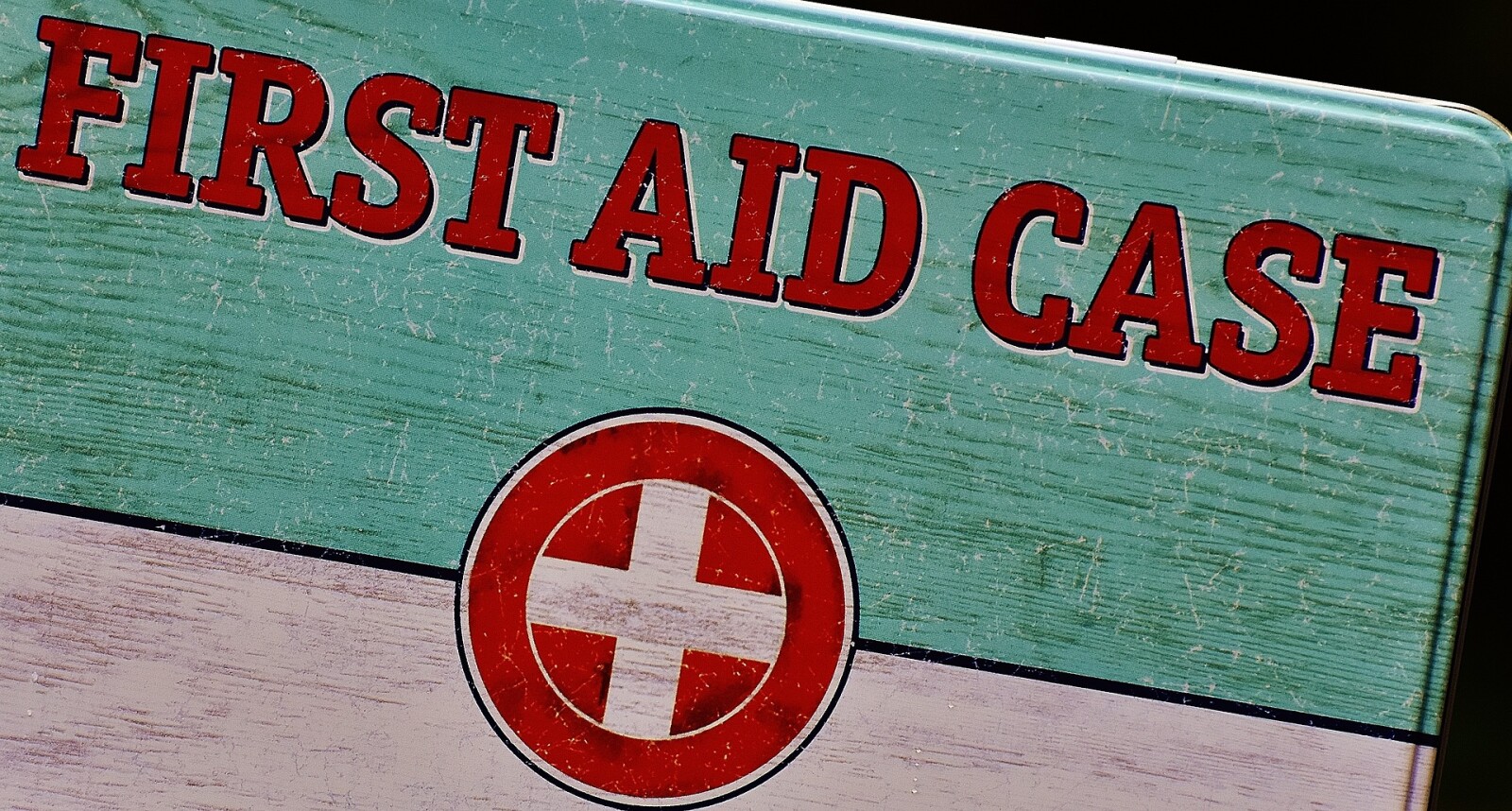
This post may contain affiliate links, which means that I may receive a commission if you make a purchase using these links, with NO additional cost to you.
Animals can bring so much joy and entertainment to our lives. From chickens and guineas, all the way up to horses and bottle lambs, it’s hard not to love having animals around. Even though they bring us joy, there are bound to be some minor injuries along the way. That’s why I always keep a first aid kit handy, just in case! In this blog post, I’ll share with you some of my must-have animal first aid supplies for all species, as well as some specific supplies for birds that live on my homestead.
The Basics For Every Species
No matter what type of animal you have, there are certain items that should be kept in your first aid kit at all times.
• Vet Wrap - Not only is vet wrap incredibly versatile—it can be used for bandaging sprains or holding an ice pack in place—but it also stays put even when wet or dirty. This makes it perfect for animals who spend a lot of time outdoors or get muddy often. Or even the perfect band aid for yourself.
• Gauze Pads - These are essential for cleaning out any wounds that your animals may get. They’re also great for absorbing blood and other fluids from deeper cuts or scrapes so that you can properly assess the damage and treat accordingly.
• Diapers - Believe it or not, diapers are very useful in animal first aid kits! They make an excellent padding material when bandaging large areas (like a horse's leg) because they have soft material on both sides and are thick enough that they won't tear easily. Plus, they're absorbent so they'll help keep the wound area dry during treatment. They are perfect for keeping a foot clean in the case of a foot abscess too. For how to treat that, click here.
• Duck Tape – Honestly this is in the vet kit and tool box. In the first aid kit, duck tape is the top layer in an abscess boot, or the final rings on a leg wrap.
• Calendula Salve - This salve is amazing for treating minor cuts and scrapes on any species of animal. It has anti-inflammatory properties which will help reduce swelling and discomfort while promoting healing and tissue regeneration at the same time. I have used this on scrapes and gashes from untrimmed rooster spurs. Read how to make it here.
• Epson Salt - Epson salt is essential if your animals ever has an abscess. Typically, you dissolve the salt in warm water to make a soak solution.
• Clean Bucket – Having a clean bucket nearby helps you transport water or cleaning solutions easily while keeping your hands free during treatment of your animal’s injury. It also comes in handy if you need to soak any gauze pads before using them on a wound—just fill up the bucket with water, add whatever disinfectant you prefer, then drop the gauze pads into the solution until ready to use!
• Cotton Batting – Cotton batting is great for wrapping around sprains since it provides cushioning without being too tight against the skin which could cause further discomfort for your pet (or livestock). Also works well as stuffing inside bandages if needed!
• Clean Rags – These come in handy when wiping away dirt from wounds before applying topical treatments like calendula salve or iodine solution (which we'll talk about later). They can also be used to clean off tools/supplies between uses so that everything stays sanitary throughout treatment processes.
• Syringes – Can be used to deliver needed antibiotics, but most often I’m using them for drenching, or washing out wound areas to small for a hose.
• Iodine – This is specifically for disinfecting tools or cleaning out abscesses.
• Lavender and Copieba Essential Oil – I use these two with calendula salve, to speed healing and decrease the pain on open wounds.
For The Birds
If you have chickens, geese, turkeys or guineas in your flock then there are two additional products that I would highly recommend having on hand: Nutri-Drink and Hydro-Boost. Nutri-Drink is an electrolyte supplement that helps poultry stay hydrated in hot weather while Hydro-Boost provides essential vitamins and minerals necessary for proper nutrition. Both products can be added to water and they taste great so birds will drink them willingly! Any time a bird is injured or stressed (like newly shipped chicks), I add some to the water for the first day and help out.
Having the right supplies on hand when caring for injured animals can make all the difference between a successful recovery and an unsuccessful one. With this list of must-haves in mind, you will be well prepared if an injury occurs with any of your animals—especially birds! Gather up these items now so that they’re ready when needed; doing so will give you peace of mind knowing that if the worst happens you’ll have everything necessary to provide the best possible care to your beloved pets. Good luck!
As I've grown in my journey as an entrepreneur, mom, gardener, and livestock owner, I struggled to find a planner that met my needs and kept me organized. So I MADE MY OWN. You can take a look at it on the link blow and buy it on amazon below
Look inside the 2023 Planner
Buy the 2023 Planner
Don't want the whole calendar part? I got you! I pulled the gardening and animal care pages out and put them in a book all their own.
Look inside the Organizer
Buy the Organizer
Wanting a community to lean into? Join the FREE Helping Your Family Homestead for Food group! This community is for the Mommas, looking to stay home and raise their kids, but unsure how to keep everyone fed and make ends meet. I share tips from my journey from the office, to half the income and feeding my family from home, while maintaining good nourishing food. Tips include: gardening, bulk buying, caning,/preserving, livestock, homesteading, and home remedies. Your family is precious and this group is to help you gain the knowledge and tools to keep your family well and not reliant on outside professionals. Remedies and tips are easy and simple for the busy momma, time is precious after all, including pregnancy, birth, young kids, and illness. Trust your Momma gut again! This community offers the resources + community you need to help get started on your journey and prepare for whatever future you envision.
Join the Free Community
Starting to garden doesn't have to be hard! I gathered all the tips I've learned over my gardening learning curve and made them into a simple course to jump start your gardening your life.
Grab the Gardening Basics Course
Supporting Your Family Naturally From the Inside Out community!! This community is for the Mommas, looking to Support Your Family from Nature for Wellness. Tips range from nutrition, herbals, detoxing, natural cleaning, and essential oils. Basically all the things I’ve learned slowly over the past 5+ years if my journey. We have moved off Facebook, so to better serve our community and be able to discuss openly option for providing for your family in the best way possible.
Join the FREE Community
I've had 3 very different pregnancies. After the first traumatic birth, I learned better and how to care for my body naturally and prevent common pregnancy and birth problems before they arise. This quick course will get you the tools you need to have a naturally healthy pregnancy, labor, and delivery. My first pregnancy I had a normal western medicine all the things pregnancy. My second? I flipped to completely natural, no medicine. Bonus: Preventing Preeclampsia Without the Aspirin & Healing from Birth Trauma
Get the Healthy Pregnancy Course
Click here to get the stories straight to your email:
Sign up for the Blog
For more on wellness tips click here:
Sign up for Wellness tips
For more on homesteading on your budget click here:
Sign up for Homesteading Tips
Animals can bring so much joy and entertainment to our lives. From chickens and guineas, all the way up to horses and bottle lambs, it’s hard not to love having animals around. Even though they bring us joy, there are bound to be some minor injuries along the way. That’s why I always keep a first aid kit handy, just in case! In this blog post, I’ll share with you some of my must-have animal first aid supplies for all species, as well as some specific supplies for birds that live on my homestead.
The Basics For Every Species
No matter what type of animal you have, there are certain items that should be kept in your first aid kit at all times.
• Vet Wrap - Not only is vet wrap incredibly versatile—it can be used for bandaging sprains or holding an ice pack in place—but it also stays put even when wet or dirty. This makes it perfect for animals who spend a lot of time outdoors or get muddy often. Or even the perfect band aid for yourself.
• Gauze Pads - These are essential for cleaning out any wounds that your animals may get. They’re also great for absorbing blood and other fluids from deeper cuts or scrapes so that you can properly assess the damage and treat accordingly.
• Diapers - Believe it or not, diapers are very useful in animal first aid kits! They make an excellent padding material when bandaging large areas (like a horse's leg) because they have soft material on both sides and are thick enough that they won't tear easily. Plus, they're absorbent so they'll help keep the wound area dry during treatment. They are perfect for keeping a foot clean in the case of a foot abscess too. For how to treat that, click here.
• Duck Tape – Honestly this is in the vet kit and tool box. In the first aid kit, duck tape is the top layer in an abscess boot, or the final rings on a leg wrap.
• Calendula Salve - This salve is amazing for treating minor cuts and scrapes on any species of animal. It has anti-inflammatory properties which will help reduce swelling and discomfort while promoting healing and tissue regeneration at the same time. I have used this on scrapes and gashes from untrimmed rooster spurs. Read how to make it here.
• Epson Salt - Epson salt is essential if your animals ever has an abscess. Typically, you dissolve the salt in warm water to make a soak solution.
• Clean Bucket – Having a clean bucket nearby helps you transport water or cleaning solutions easily while keeping your hands free during treatment of your animal’s injury. It also comes in handy if you need to soak any gauze pads before using them on a wound—just fill up the bucket with water, add whatever disinfectant you prefer, then drop the gauze pads into the solution until ready to use!
• Cotton Batting – Cotton batting is great for wrapping around sprains since it provides cushioning without being too tight against the skin which could cause further discomfort for your pet (or livestock). Also works well as stuffing inside bandages if needed!
• Clean Rags – These come in handy when wiping away dirt from wounds before applying topical treatments like calendula salve or iodine solution (which we'll talk about later). They can also be used to clean off tools/supplies between uses so that everything stays sanitary throughout treatment processes.
• Syringes – Can be used to deliver needed antibiotics, but most often I’m using them for drenching, or washing out wound areas to small for a hose.
• Iodine – This is specifically for disinfecting tools or cleaning out abscesses.
• Lavender and Copieba Essential Oil – I use these two with calendula salve, to speed healing and decrease the pain on open wounds.
For The Birds
If you have chickens, geese, turkeys or guineas in your flock then there are two additional products that I would highly recommend having on hand: Nutri-Drink and Hydro-Boost. Nutri-Drink is an electrolyte supplement that helps poultry stay hydrated in hot weather while Hydro-Boost provides essential vitamins and minerals necessary for proper nutrition. Both products can be added to water and they taste great so birds will drink them willingly! Any time a bird is injured or stressed (like newly shipped chicks), I add some to the water for the first day and help out.
Having the right supplies on hand when caring for injured animals can make all the difference between a successful recovery and an unsuccessful one. With this list of must-haves in mind, you will be well prepared if an injury occurs with any of your animals—especially birds! Gather up these items now so that they’re ready when needed; doing so will give you peace of mind knowing that if the worst happens you’ll have everything necessary to provide the best possible care to your beloved pets. Good luck!
As I've grown in my journey as an entrepreneur, mom, gardener, and livestock owner, I struggled to find a planner that met my needs and kept me organized. So I MADE MY OWN. You can take a look at it on the link blow and buy it on amazon below
Look inside the 2023 Planner
Buy the 2023 Planner
Don't want the whole calendar part? I got you! I pulled the gardening and animal care pages out and put them in a book all their own.
Look inside the Organizer
Buy the Organizer
Wanting a community to lean into? Join the FREE Helping Your Family Homestead for Food group! This community is for the Mommas, looking to stay home and raise their kids, but unsure how to keep everyone fed and make ends meet. I share tips from my journey from the office, to half the income and feeding my family from home, while maintaining good nourishing food. Tips include: gardening, bulk buying, caning,/preserving, livestock, homesteading, and home remedies. Your family is precious and this group is to help you gain the knowledge and tools to keep your family well and not reliant on outside professionals. Remedies and tips are easy and simple for the busy momma, time is precious after all, including pregnancy, birth, young kids, and illness. Trust your Momma gut again! This community offers the resources + community you need to help get started on your journey and prepare for whatever future you envision.
Join the Free Community
Starting to garden doesn't have to be hard! I gathered all the tips I've learned over my gardening learning curve and made them into a simple course to jump start your gardening your life.
Grab the Gardening Basics Course
Supporting Your Family Naturally From the Inside Out community!! This community is for the Mommas, looking to Support Your Family from Nature for Wellness. Tips range from nutrition, herbals, detoxing, natural cleaning, and essential oils. Basically all the things I’ve learned slowly over the past 5+ years if my journey. We have moved off Facebook, so to better serve our community and be able to discuss openly option for providing for your family in the best way possible.
Join the FREE Community
I've had 3 very different pregnancies. After the first traumatic birth, I learned better and how to care for my body naturally and prevent common pregnancy and birth problems before they arise. This quick course will get you the tools you need to have a naturally healthy pregnancy, labor, and delivery. My first pregnancy I had a normal western medicine all the things pregnancy. My second? I flipped to completely natural, no medicine. Bonus: Preventing Preeclampsia Without the Aspirin & Healing from Birth Trauma
Get the Healthy Pregnancy Course
Click here to get the stories straight to your email:
Sign up for the Blog
For more on wellness tips click here:
Sign up for Wellness tips
For more on homesteading on your budget click here:
Sign up for Homesteading Tips
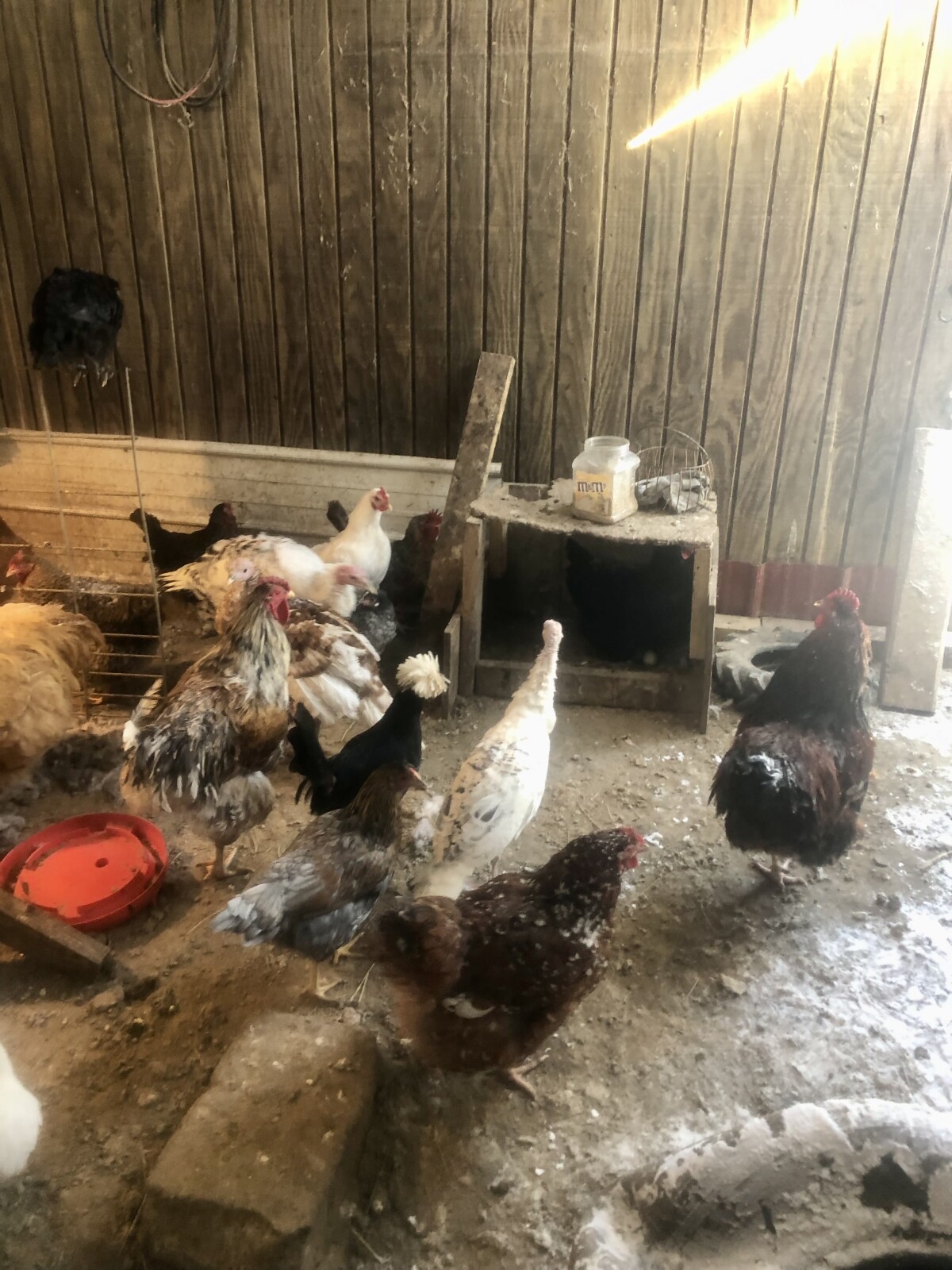
This post may contain affiliate links, which means that I may receive a commission if you make a purchase using these links, with NO additional cost to you.
Contrary to popular belief, you can have chickens in most places. Even if you live in the city and don’t think you can accommodate them. Chickens are one of the few types of livestock that take up very little space and still give you so many benefits. Laying hens will provide eggs for your family, plus make great disposals for kitchen and garden scraps. If you want to raise meat birds, it’s possible in most places too! Some cities may have limits as to how many and what kinds (no roosters) but they usually allow some type of chicken keeping. Check with your local ordinance for specifics. Let’s explore more about urban chicken keeping!
Knowing Your City Ordinances
Before you even think about getting chickens, check with your city ordinances. Some cities/towns may have limits or restrictions as to how many chickens you can have or whether or not you can have roosters on the property. This is especially important if there are neighborhood associations that could potentially cite you if they find out about your chickens before you get it approved by the local government. Make sure to check those first!
Space Considerations
Chickens don’t need much space; however, there are some things that should be taken into consideration such as the size of their coop and run area, plus having enough space for a place where they can scratch and dust bathe. Having at least 4 square feet per bird inside their coop is recommended, plus 10-15 square feet per bird in their run area outside. To little space and they become stressed which means less eggs for you.
They also need a secure place where they can get away from predators like raccoons, possums, hawks, and cats. A small backyard is usually sufficient to accommodate three or four hens; however, if you're raising meat birds that require more space than laying hens then your backyard needs will increase accordingly. If possible, try to keep this area away from any windy areas which could make them cold and uncomfortable during winter months.
Feed & Water Considerations
Chickens need a specific type of food that's formulated specifically for their nutritional needs — while they might enjoy eating leftovers from the table every once in a while, those foods should not make up the majority of their diet. Additionally, depending on where you live, there may be some restrictions for storing large amounts of feed due to vermin control laws or zoning regulations; again, this is something you should check into before committing to owning chickens. Even if you don’t have a large space to buy bulk ingredients, you can find preformulated bagged food at local farm stores.
A feeder and water station should also be taken into consideration when planning out your urban chicken keeping set up. You would need one feeder per 6-10 birds plus a water station big enough for all of them to drink from without overcrowding each other while they do so. The type of water or feeder is not important, you can find or reuse old stuff too, just make sure that these containers have lids so that food doesn’t get wet due to rain or rodents trying to get into it during nighttime hours when the chickens aren’t around (they usually go back inside at dusk).
Urban chicken keeping is becoming more popular due to its low-cost investment yet high return benefits of fresh eggs daily along with having an easy disposal system for kitchen scraps & garden waste. However, knowing local ordinances is always important before investing too much into any type of livestock keeping project; after all nobody wants fines added onto already expensive projects! But once everything gets approved by the local government then it's time to start thinking about ways we can make our future chicken flock comfortable while still having plenty of room left over in our yards for other activities like gardening or playing sports with friends & family members alike! All in all, urban chicken keeping is definitely something worth exploring further - go ahead & see what options might be available near where YOU live today!
As I've grown in my journey as an entrepreneur, mom, gardener, and livestock owner, I struggled to find a planner that met my needs and kept me organized. So I MADE MY OWN. You can take a look at it on the link blow and buy it on amazon below
Don't want the whole calendar part? I got you! I pulled the gardening and animal care pages out and put them in a book all their own.
Wanting a community to lean into? Join the FREE Helping Your Family Homestead for Food group! This community is for the Mommas, looking to stay home and raise their kids, but unsure how to keep everyone fed and make ends meet. I share tips from my journey from the office, to half the income and feeding my family from home, while maintaining good nourishing food. Tips include: gardening, bulk buying, caning,/preserving, livestock, homesteading, and home remedies. Your family is precious and this group is to help you gain the knowledge and tools to keep your family well and not reliant on outside professionals. Remedies and tips are easy and simple for the busy momma, time is precious after all, including pregnancy, birth, young kids, and illness. Trust your Momma gut again! This community offers the resources + community you need to help get started on your journey and prepare for whatever future you envision.
Starting to garden doesn't have to be hard! I gathered all the tips I've learned over my gardening learning curve and made them into a simple course to jump start your gardening your life.
I've had 3 very different pregnancies. After the first traumatic birth, I learned better and how to care for my body naturally and prevent common pregnancy and birth problems before they arise. This quick course will get you the tools you need to have a naturally healthy pregnancy, labor, and delivery. My first pregnancy I had a normal western medicine all the things pregnancy. My second? I flipped to completely natural, no medicine. Bonus: Preventing Preeclampsia Without the Aspirin & Healing from Birth Trauma
Supporting Your Family Naturally From the Inside Out community!! This community is for the Mommas, looking to Support Your Family from Nature for Wellness. Tips range from nutrition, herbals, detoxing, natural cleaning, and essential oils. Basically all the things I’ve learned slowly over the past 5+ years if my journey. We have moved off Facebook, so to better serve our community and be able to discuss openly option for providing for your family in the best way possible.
Join the Community
Join the Community
Click here to get the stories straight to your email:
For more on wellness tips click here:
For more on homesteading on your budget click here:
For more simple DIY updates click here:
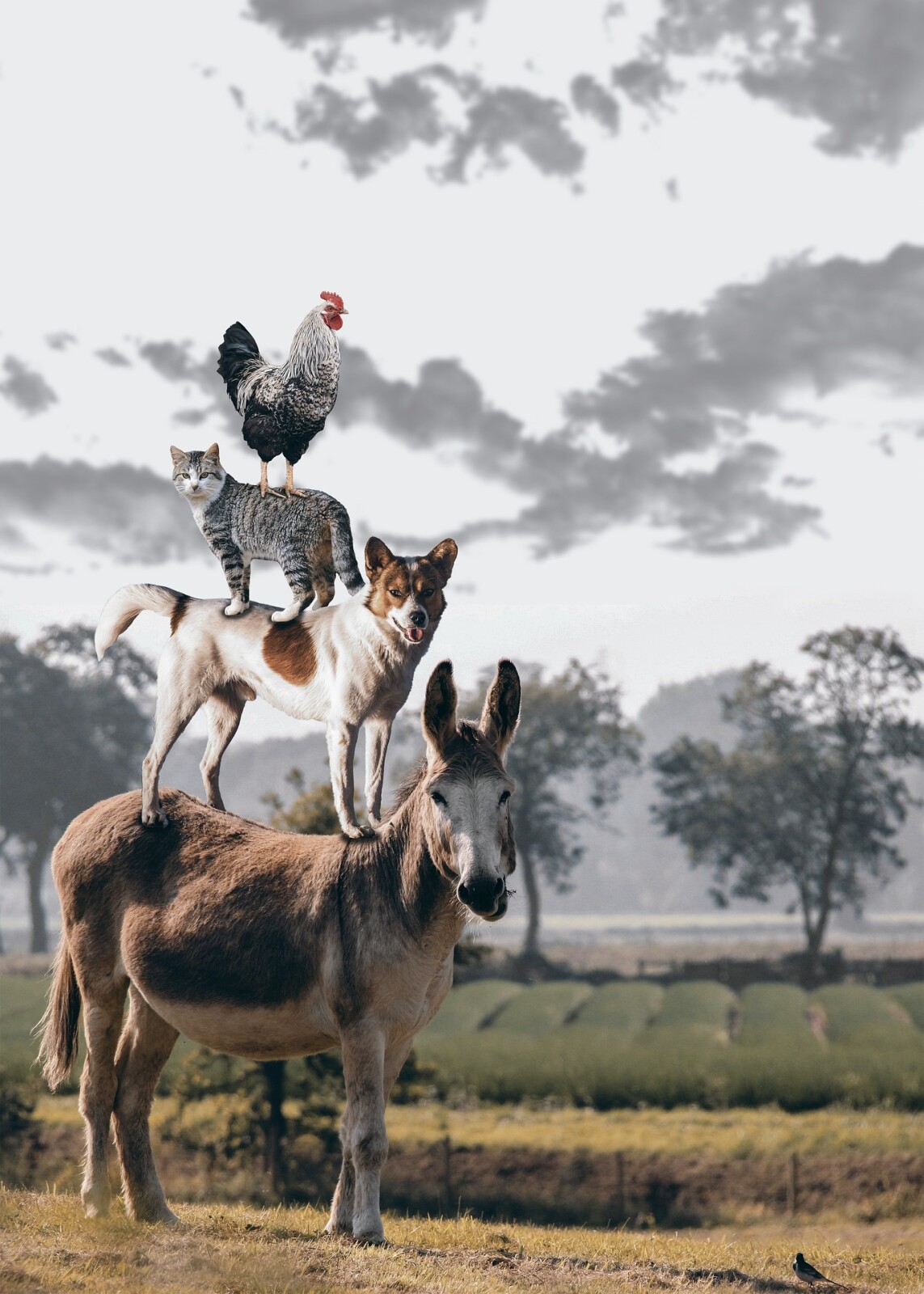
This post may contain affiliate links, which means that I may receive a commission if you make a purchase using these links, with NO additional cost to you.
Caring for animals is a rewarding experience. They bring joy, companionship, and even produce food or fiber. But taking care of animals is also a big responsibility! Whether you’re caring for chickens, goats, cows, pigs or any other homestead animal, there are certain basic needs all animals require in order to stay healthy and happy. In this article I will discuss the basics of animal care - shelter, water, food and safety - so that you can make sure your furry (or feathered) friends are getting everything they need.
Shelter & Safety
All animals need some kind of shelter to protect them from weather, predators, and other dangers. Even if you don’t have a large barn or coop, something as simple as a shaded area can provide protection from the elements. Make sure your animal has enough space to move around comfortably in their shelter. Even if that means a shade tree in the pasture for cattle.
Create boundaries around your property so that your animals don’t wander off; also make sure there aren't any hazardous materials nearby that could harm them (like toxic chemicals). Keep an eye out for predators like coyotes or foxes that could be lurking near your homestead—if necessary, install fencing or other deterrents, like livestock guardians, for added protection. Keeping animals safe also means ensuring access to clean living spaces free from sharp objects or other hazards that could cause injury or death to an unsuspecting animal. Finally, it’s important not to overcrowd the living area and shelter; too many animals can lead to fights which could result in serious injury or death.
Water
Animals require clean drinking water every day in order to stay hydrated and healthy. Make sure your animal’s water source is always full and that it’s changed regularly (at least once a week). During the winter months be sure to provide warm water as well; cold water can freeze quickly in the winter so having a heated water bowl is essential for keeping your animals hydrated when temperatures drop below freezing.
Food
Different types of animals have different dietary needs, in order to grow and stay healthy, so it’s important to research what type of food is best for your specific animal (more to come on specific animals). In general though, all animals need a balanced diet which includes carbohydrates (grains typically), proteins (for the amino acids), vitamins/minerals (supplements) and fiber (grass/hay). It’s also important to monitor how much they eat—too much food can lead to obesity or other health issues. Additionally, some types of animals may require special diets depending on their age or health status so make sure you check with your veterinarian if you have any questions about what type of food your animal needs.
Taking care of animals doesn’t have to be complex or intimidating—the basics remain relatively universal across different species! The key components are shelter, safety, water, and food; if you keep those four things in mind then you should be able to give your animals everything they need for happy lives on your homestead!
As I've grown in my journey as an entrepreneur, mom, gardener, and livestock owner, I struggled to find a planner that met my needs and kept me organized. So I MADE MY OWN. You can take a look at it on the link blow and buy it on amazon below
Don't want the whole calendar part? I got you! I pulled the gardening and animal care pages out and put them in a book all their own.
Wanting a community to lean into? Join the FREE Helping Your Family Homestead for Food group! This community is for the Mommas, looking to stay home and raise their kids, but unsure how to keep everyone fed and make ends meet. I share tips from my journey from the office, to half the income and feeding my family from home, while maintaining good nourishing food. Tips include: gardening, bulk buying, caning,/preserving, livestock, homesteading, and home remedies. Your family is precious and this group is to help you gain the knowledge and tools to keep your family well and not reliant on outside professionals. Remedies and tips are easy and simple for the busy momma, time is precious after all, including pregnancy, birth, young kids, and illness. Trust your Momma gut again! This community offers the resources + community you need to help get started on your journey and prepare for whatever future you envision.
Starting to garden doesn't have to be hard! I gathered all the tips I've learned over my gardening learning curve and made them into a simple course to jump start your gardening your life.
Supporting Your Family Naturally From the Inside Out community!! This community is for the Mommas, looking to Support Your Family from Nature for Wellness. Tips range from nutrition, herbals, detoxing, natural cleaning, and essential oils. Basically all the things I’ve learned slowly over the past 5+ years if my journey. We have moved off Facebook, so to better serve our community and be able to discuss openly option for providing for your family in the best way possible.
Join the FREE Community
Join the FREE Community
I've had 3 very different pregnancies. After the first traumatic birth, I learned better and how to care for my body naturally and prevent common pregnancy and birth problems before they arise. This quick course will get you the tools you need to have a naturally healthy pregnancy, labor, and delivery. My first pregnancy I had a normal western medicine all the things pregnancy. My second? I flipped to completely natural, no medicine. Bonus: Preventing Preeclampsia Without the Aspirin & Healing from Birth Trauma
Click here to get the stories straight to your email:
For more on wellness tips click here:
For more on homesteading on your budget click here:
For more simple DIY updates click here:
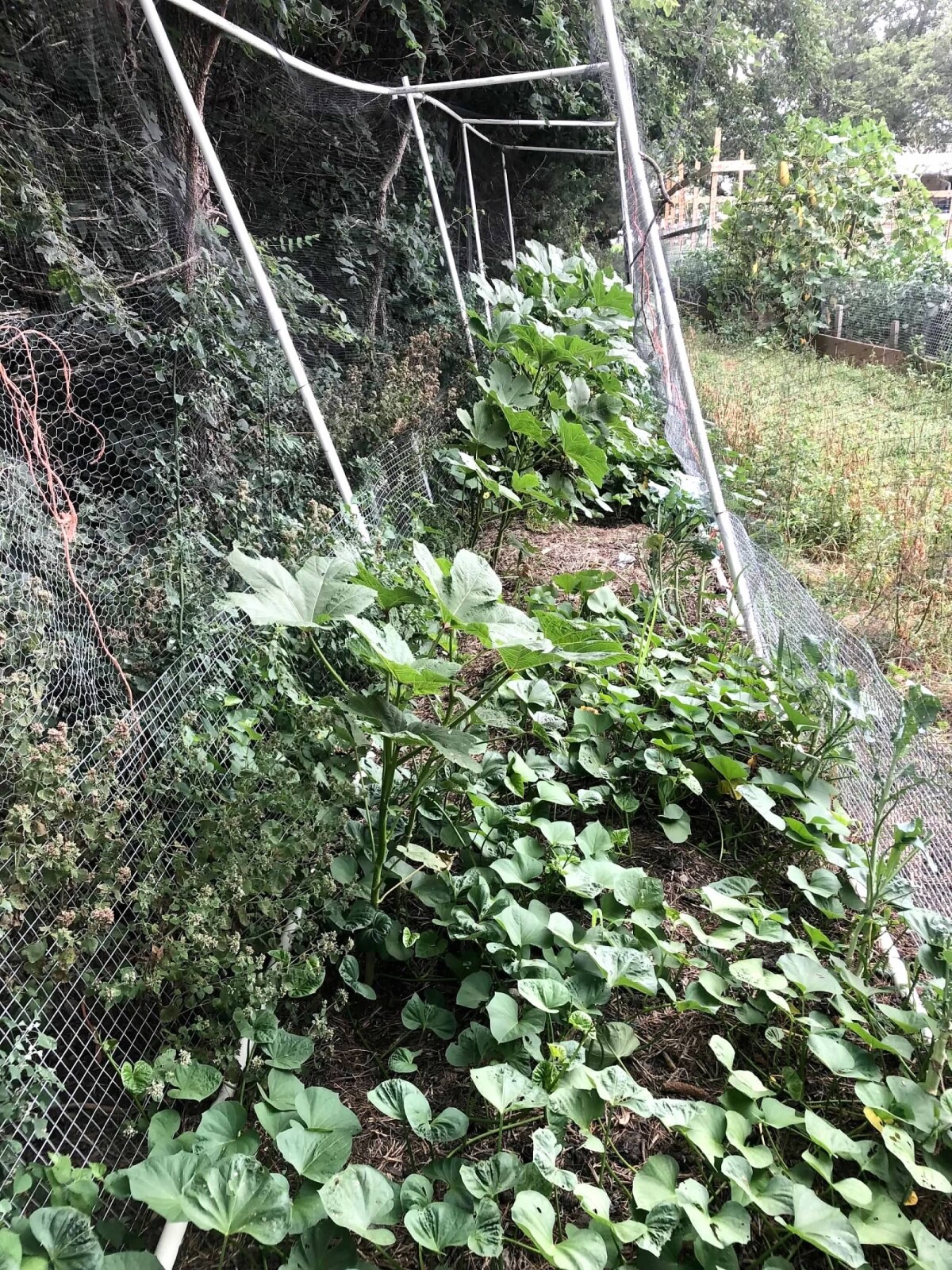
This post may contain affiliate links, which means that I may receive a commission if you make a purchase using these links, with NO additional cost to you.
Summer is an excellent time to tend to your garden. Whether you’ve been gardening for years or are just starting out, there are a few must-dos that will make sure your garden blooms and bears fruit all summer long. Let’s take a look at some of the tasks that can help you get the most out of your summer garden this year.
Watering & Weeding
The two most important things you can do for your garden in the summer are water and weed, both of which should be done regularly. Watering is essential for keeping plants alive and healthy, especially during the hot summer months. Make sure to check soil moisture levels before watering, as overwatering can be just as damaging as not watering enough. As for weeding, it goes without saying that these pesky plants need to be removed from your garden or else they will choke out other plants and steal nutrients from them.
Check Canning Jars & Freezer Supplies
If you plan on preserving any of your harvest, make sure you have enough jars and lids on hand. Check each one for cracks or chips and replace if needed. While you’re at it, go ahead and check freezer supplies like plastic bags or containers so you can freeze any harvests that won’t fit into jars, or you don’t want to can.
Harvest & Plant Early Crops
Now is the perfect time to get started harvesting some of those short season crops like lettuce, radishes, kale and spinach - these will be ready before the heat of summer kicks in. You should also think about starting any fall seedlings like broccoli and cauliflower now too - these will take a bit longer, but they will be worth it come harvest time! Plant Fall Crops Mid-Summer, once midsummer rolls around (around July), it’s time to start planting those fall crops like broccoli - you want them planted early enough so that they have plenty of time to mature before frost hits!
Summer is a great time of year to tend to your garden! With just a few simple steps—like watering and weeding regularly, checking canning jars and freezer supplies for preserving harvests, and starting fall seedlings—you can ensure that your garden provides plenty of fresh produce all summer long. So don't wait another minute; get out there and get gardening!
As I've grown in my journey as an entrepreneur, mom, gardener, and livestock owner, I struggled to find a planner that met my needs and kept me organized. So I MADE MY OWN. You can take a look at it on the link blow and buy it on amazon below
Don't want the whole calendar part? I got you! I pulled the gardening and animal care pages out and put them in a book all their own.
Wanting a community to lean into? Join the FREE Helping Your Family Homestead for Food group! This community is for the Mommas, looking to stay home and raise their kids, but unsure how to keep everyone fed and make ends meet. I share tips from my journey from the office, to half the income and feeding my family from home, while maintaining good nourishing food. Tips include: gardening, bulk buying, caning,/preserving, livestock, homesteading, and home remedies. Your family is precious and this group is to help you gain the knowledge and tools to keep your family well and not reliant on outside professionals. Remedies and tips are easy and simple for the busy momma, time is precious after all, including pregnancy, birth, young kids, and illness. Trust your Momma gut again! This community offers the resources + community you need to help get started on your journey and prepare for whatever future you envision.
Starting to garden doesn't have to be hard! I gathered all the tips I've learned over my gardening learning curve and made them into a simple course to jump start your gardening your life.
Supporting Your Family Naturally From the Inside Out community!! This community is for the Mommas, looking to Support Your Family from Nature for Wellness. Tips range from nutrition, herbals, detoxing, natural cleaning, and essential oils. Basically all the things I’ve learned slowly over the past 5+ years if my journey. We have moved off Facebook, so to better serve our community and be able to discuss openly option for providing for your family in the best way possible.
Join the FREE Community
Join the FREE Community
I've had 3 very different pregnancies. After the first traumatic birth, I learned better and how to care for my body naturally and prevent common pregnancy and birth problems before they arise. This quick course will get you the tools you need to have a naturally healthy pregnancy, labor, and delivery. My first pregnancy I had a normal western medicine all the things pregnancy. My second? I flipped to completely natural, no medicine. Bonus: Preventing Preeclampsia Without the Aspirin & Healing from Birth Trauma
Click here to get the stories straight to your email:
For more on wellness tips click here:
For more on homesteading on your budget click here:
For more simple DIY updates click here:
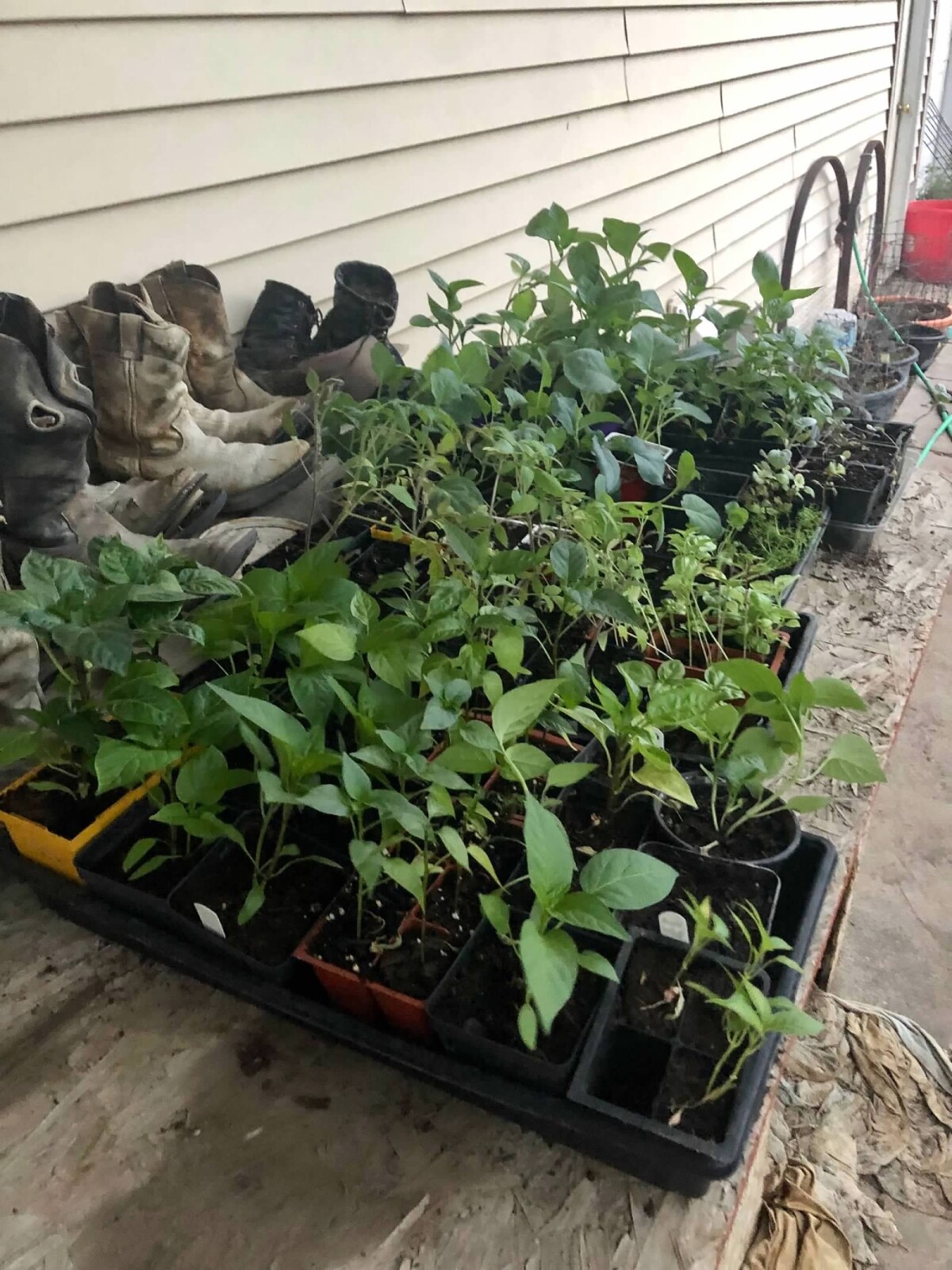
This post may contain affiliate links, which means that I may receive a commission if you make a purchase using these links, with NO additional cost to you.
Spring is coming, and with it comes a whole new set of gardening tasks. Now is the time to get busy in the garden! Whether you’re a mom or a beginner gardener, there are certain things that need to be done in the springtime to make sure your garden is ready for the upcoming growing season. Let’s take a look at what needs to be done and why.
Till the Garden if Needed
If you haven’t done so already, now is a great time to till your garden beds if needed. Tilling helps break up any compaction in the soil caused by winter weather and encourages drainage, aeration, and nutrient absorption. This process will help ensure that all your plants get off to a good start. Just be sure not to over-till as this can damage plant roots and beneficial organisms such as earthworms.
Source Mulch
Another important step in prepping your garden for spring is sourcing mulch. Mulching helps keep down weeds and retain moisture around your plants while making your garden look neat and tidy at the same time. You can use anything from straw to shredded bark chips as mulch material—just make sure it's organic and free of any chemicals or other contaminants that could harm your plants.
Check Soil Temperatures
Before planting anything, it’s important to check soil temperatures with a thermometer or even a handheld infrared thermometer gun (which will give you an accurate reading within seconds). Some cold tolerant plants, like potatoes, carrots, and lettuce can be planted as soon as the soil reaches 50 degrees Fahrenheit but most vegetables won't start germinating until temperatures reach about 70 degrees Fahrenheit or higher. Knowing when it's safe to start planting will help ensure success with your vegetables later on.
Plan Where You're Going To Plant Everything
Once you know what you want to plant and when it's safe to do so, take some time to plan where everything should go in the garden. Different types of plants have different needs—some thrive in full sun while others prefer partial shade—so make sure you do some research before deciding where each type should go in order to maximize their potential yields come harvest time! This also saves you time when you are trying to plant with kids helping.
Clean Out Any Flower Beds But Wait Until The Bees Wake Up
Finally, take some time to clean up any flower beds that may have been neglected over winter but wait until after bees wake up before doing so! Bees tend to hide under dead leaves during colder months for protection from predators like birds but they'll be coming out soon enough when temperatures rise above freezing (usually around mid-April). Once they're back out buzzing around flowers again, then it's safe for you to clean up without fear of disturbing them!
Start Planting!
Once everything else is taken care of—the tilling is done, mulch is sourced, and soil temperatures have been checked—it’s finally time to start planting! Pay attention to seed package instructions and plant accordingly; some seeds may need light or darkness in order to germinate properly while others may need warmer or cooler conditions than expected. Keep an eye on them after they are planted so that you know when it's time for waterings or other maintenance tasks like weeding or pest control.
Getting ready for spring gardening doesn't have to be daunting task! Taking care of these basic tasks will help ensure that your garden is healthy throughout the entire growing season. Till if needed, source mulch, check soil temperatures, plan where to plant, clean out any flower beds but wait until the bees wake up, and get planting!. With these steps in mind, you'll be well on your way towards having a beautiful backyard oasis! Happy Gardening!
As I've grown in my journey as an entrepreneur, mom, gardener, and livestock owner, I struggled to find a planner that met my needs and kept me organized. So I MADE MY OWN. You can take a look at it on the link blow and buy it on amazon below
Don't want the whole calendar part? I got you! I pulled the gardening and animal care pages out and put them in a book all their own.
Wanting a community to lean into? Join the FREE Helping Your Family Homestead for Food group! This community is for the Mommas, looking to stay home and raise their kids, but unsure how to keep everyone fed and make ends meet. I share tips from my journey from the office, to half the income and feeding my family from home, while maintaining good nourishing food. Tips include: gardening, bulk buying, caning,/preserving, livestock, homesteading, and home remedies. Your family is precious and this group is to help you gain the knowledge and tools to keep your family well and not reliant on outside professionals. Remedies and tips are easy and simple for the busy momma, time is precious after all, including pregnancy, birth, young kids, and illness. Trust your Momma gut again! This community offers the resources + community you need to help get started on your journey and prepare for whatever future you envision.
Starting to garden doesn't have to be hard! I gathered all the tips I've learned over my gardening learning curve and made them into a simple course to jump start your gardening your life.
Supporting Your Family Naturally From the Inside Out community!! This community is for the Mommas, looking to Support Your Family from Nature for Wellness. Tips range from nutrition, herbals, detoxing, natural cleaning, and essential oils. Basically all the things I’ve learned slowly over the past 5+ years if my journey. We have moved off Facebook, so to better serve our community and be able to discuss openly option for providing for your family in the best way possible.
Join the FREE Community
Join the FREE Community
I've had 3 very different pregnancies. After the first traumatic birth, I learned better and how to care for my body naturally and prevent common pregnancy and birth problems before they arise. This quick course will get you the tools you need to have a naturally healthy pregnancy, labor, and delivery. My first pregnancy I had a normal western medicine all the things pregnancy. My second? I flipped to completely natural, no medicine. Bonus: Preventing Preeclampsia Without the Aspirin & Healing from Birth Trauma
Click here to get the stories straight to your email:
For more on wellness tips click here:
For more on homesteading on your budget click here:
For more simple DIY updates click here:
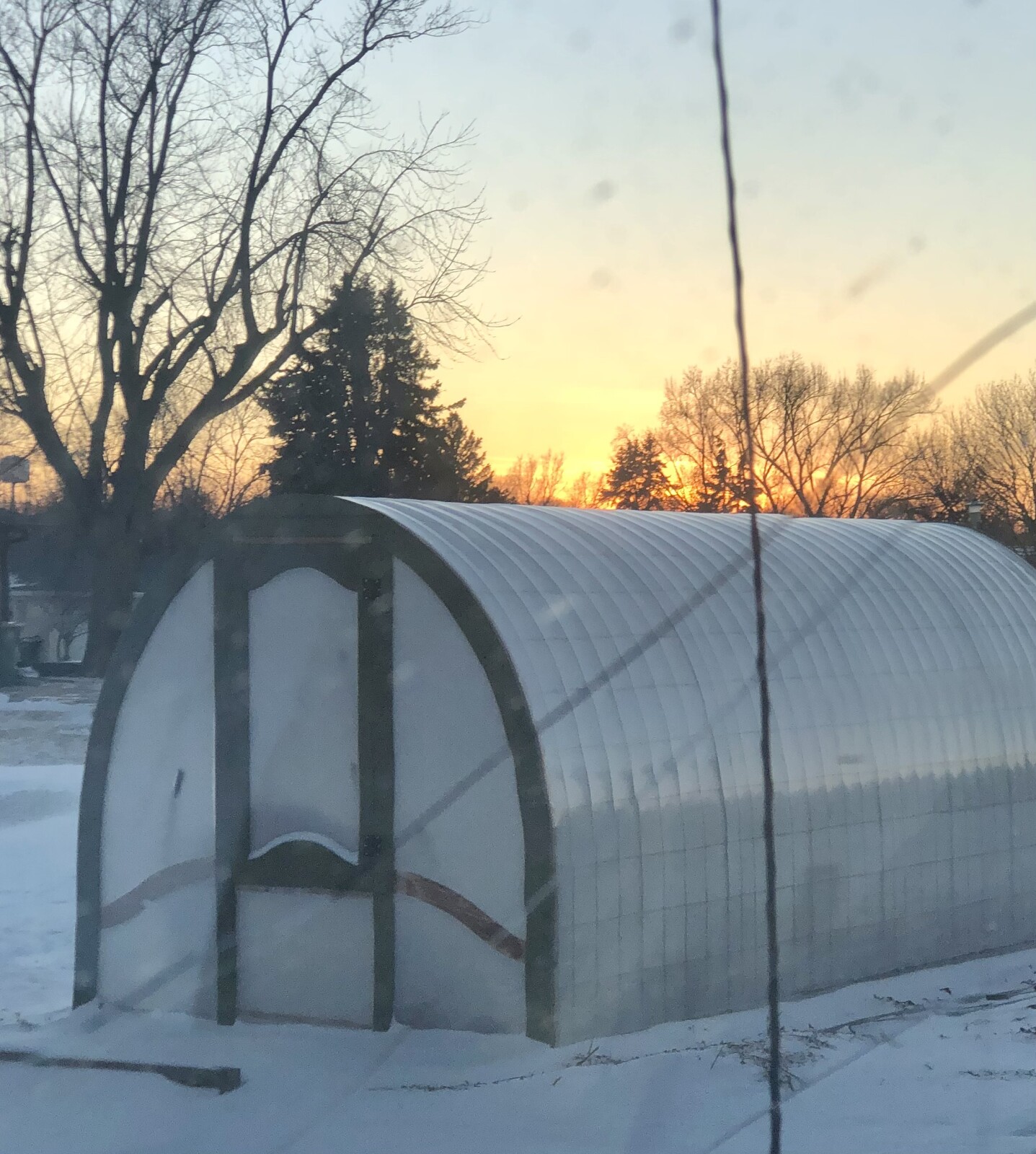
This post may contain affiliate links, which means that I may receive a commission if you make a purchase using these links, with NO additional cost to you.
Even though winter is here and it's cold outside, that doesn't mean your garden has to be dormant. With careful planning and a little bit of effort, there are still plenty of things you can do in the garden this winter. From trimming roses and berry bushes to ordering seeds and starting seedlings, there are lots of ways to get your garden ready for spring. Let’s explore some of the best winter gardening tasks so you can make the most of your garden this winter!
Trim Roses and Berry Bushes
If you have roses or berry bushes in your garden, now is the perfect time to prune them back. Pruning roses helps stimulate new growth and encourages better blooms during their next flowering period. To prune roses, start by cutting off any dead branches or stems that appear blackened or shriveled. Be sure to use clean shears when trimming—this will help reduce the spread of disease among plants. As for berry bushes like blueberry, raspberry, or blackberry plants, you'll want to wait until they've gone completely dormant before pruning them back. This will help ensure they produce vigorous new growth in the spring.
Order Seeds
With winter being a slower season in terms of gardening tasks, it's a great time to plan out what types of seeds you'll be planting come springtime. Now is the perfect time to order seeds online or pick up packets at your local nursery or home improvement store. Take into account what did well last year as well as what didn’t perform as expected—this way you can adjust accordingly for this upcoming growing season! Be sure to read each packet carefully so you understand how long it will take for these particular seeds to germinate and grow as well as which type of soil works best for each plant type.
Start Seeds Indoors
If you want an even earlier start on the gardening season – or if there are certain plants that don’t grow well in your area – why not try starting your own seeds indoors? Tomatoes and peppers are two popular choices but there are many other vegetables (and even flowers) that can be started indoors. It may seem intimidating at first but it really isn’t that difficult once you get into it. All you need is some fresh potting soil, containers (preferably biodegradable), light fixtures with grow lights if necessary, and patience!
Fertilize Garden & Fill Raised Beds
Now is also a great time to give your garden beds some extra love by spreading compost over them or fertilizer if needed, if you didn’t already do that in the fall. You can also use this opportunity to fill raised beds with soil if they settled after harvest last season. Adding compost or fertilizer will help replenish essential nutrients in the soil so that when spring arrives your soil will be ready for planting!
There's no need for gardens—and gardeners—to hibernate all winter! As you can see, there is still plenty of work for gardeners during the winter months! From trimming bushes and ordering seeds to fertilizing beds and starting plants indoors – all these tasks will help prepare your garden for springtime. Whether you're an experienced gardener or just getting started with gardening basics this winter season is a great opportunity for moms and beginner gardeners alike get ahead on their spring plans! So, grab yourself a warm cup of tea (or cocoa!) and get started on tackling those winter garden to-dos today! Happy gardening!
As I've grown in my journey as an entrepreneur, mom, gardener, and livestock owner, I struggled to find a planner that met my needs and kept me organized. So I MADE MY OWN. You can take a look at it on the link blow and buy it on amazon below
Don't want the whole calendar part? I got you! I pulled the gardening and animal care pages out and put them in a book all their own.
Wanting a community to lean into? Join the FREE Helping Your Family Homestead for Food group! This community is for the Mommas, looking to stay home and raise their kids, but unsure how to keep everyone fed and make ends meet. I share tips from my journey from the office, to half the income and feeding my family from home, while maintaining good nourishing food. Tips include: gardening, bulk buying, caning,/preserving, livestock, homesteading, and home remedies. Your family is precious and this group is to help you gain the knowledge and tools to keep your family well and not reliant on outside professionals. Remedies and tips are easy and simple for the busy momma, time is precious after all, including pregnancy, birth, young kids, and illness. Trust your Momma gut again! This community offers the resources + community you need to help get started on your journey and prepare for whatever future you envision.
Starting to garden doesn't have to be hard! I gathered all the tips I've learned over my gardening learning curve and made them into a simple course to jump start your gardening your life.
Supporting Your Family Naturally From the Inside Out community!! This community is for the Mommas, looking to Support Your Family from Nature for Wellness. Tips range from nutrition, herbals, detoxing, natural cleaning, and essential oils. Basically all the things I’ve learned slowly over the past 5+ years if my journey. We have moved off Facebook, so to better serve our community and be able to discuss openly option for providing for your family in the best way possible.
Join the FREE Community
Join the FREE Community
I've had 3 very different pregnancies. After the first traumatic birth, I learned better and how to care for my body naturally and prevent common pregnancy and birth problems before they arise. This quick course will get you the tools you need to have a naturally healthy pregnancy, labor, and delivery. My first pregnancy I had a normal western medicine all the things pregnancy. My second? I flipped to completely natural, no medicine. Bonus: Preventing Preeclampsia Without the Aspirin & Healing from Birth Trauma
Click here to get the stories straight to your email:
For more on wellness tips click here:
For more on homesteading on your budget click here:
For more simple DIY updates click here:

